KENYA'S SOLAR REVOLUTION






JA SOLAR RELEASES ITS NEXT GENERATION MODULE DEEPBLUE 4.0 PRO Kenya's solar industry, discussing its challenges and opportunities With over 80% reliance on renewable energy for the national grid, Kenya demonstrates a strong commitment to renewables Managing Director, Metrocart ltd
POWER SOLUTIONS FOR OFFGRID COMMUNITIES IN KENYA
SOLAR
Renewable Energy is Transforming the Country C O V E R S T O R Y
How
LK VERMA
Founder & Managing Director, PowernSun





WYCLIFFE MWANGI

Technical Sales Manager East Africa
GoodWe Technologies
DAVID KARIUKI
Managing Director, Metrocart ltd
UGOCHUKWU CHUKWUJIAKA
CEO and Founder, Energy Talent Company

JULIE GREENE
Managing Director, Renewvia Solar Africa

CATHY KUYOH
Head of Credit- East Africa, Starsight Premier Energy Group (SPEG)
SIMON GRAAFF
Head Of Engineering, Ariya Finergy Holdings Ltd
15 12 18 16 14 20 22
INTERVIEW FEATURED INTERVIEW
News
SOLAR 04 09 NEWS PRODUCT LAUNCH
Africa
JA
E N T S















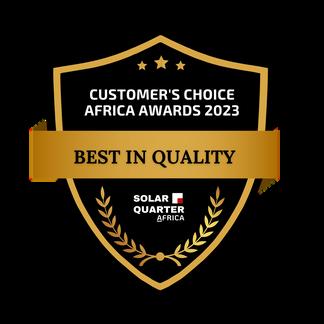






JA Solar PowerNSun Solar Power Solutions for OffGrid Communities in Kenya Kenya's Solar Farms: Harnessing the Power of the Sun at Scale Coverstory Special Story Tech Story Current Affairs Current Story 09 11 23 25 10 24 26 28 30 PRODUCT LAUNCH TECH FEATURE KNOWLEDGE BYTES SOLARQUARTER RESEARCH THE CHAMPIONS CORNER
27 29 27 BUSINESSMEET MAURITIUS AWARDS 2023 olaris Middle East AWARDS2023
IGNITE POWER ACQUIRES MWEZI’S SOLAR SOLUTIONS PORTFOLIO TO EXPAND FOOTPRINT IN KENYA


Ignite Power, a UAE-based solar solution provider, has announced the acquisition of Mwezi’s solar solutions portfolio in Kenya The acquisition would enable Ignite Power to grow its footprint in the nation by employing its proven suite of technologies and standard operating procedures to serve Mwezi’s current portfolio and improve its influence in the area This acquisition comes on the heels of Ignite Power’s recent acquisition of Pawame Kenya, a long-standing leader in Kenya’s solar energy market. Ignite Power has expanded its presence across Africa via organic expansion as well as strategic acquisitions, reproducing its proven operational processes and in-house technology to achieve exceptional costefficiency, consumer affordability, and impact

KENYA TO BUILD 136 SOLAR MINI-GRIDS FOR OFF-GRID COMMUNITIES


Kenya is constructing 136 solar-powered mini-grids in remote regions that are not adequately supplied by the national electrical grid, the country’s energy minister announced. According to the World Bank, there are over 3,000 solar mini-grids deployed in Sub-Saharan Africa, up from 300 in 2010 According to the bank, another 9,000 are planned, including those to be built in Kenya The new solar microgrids are part of a $150 million World Bank-funded scheme The networks, which are powered by solar panels, employ batteries and backup generators to produce electricity that is independent of the larger national grids
EMPOWERING AFRICA’S SUSTAINABLE FUTURE: SIGNET TERRACE SHOPPING CENTRE UNVEILS CUTTING-EDGE SOLAR POWER PLANT
Signet Terrace Shopping Centre has announced the successful commissioning of its state-of-the-art solar power plant, marking a significant milestone in its commitment to sustainable energy practices and carbon footprint reduction This ground-breaking initiative is the result of a collaborative effort between Signet Terrace Shopping Centre, Solarise Africa, Nuvo Energy Africa, and One Stop Solar, each playing a crucial role in the project’s implementation With a remarkable capacity of 975 7 kWp solar PV, the Signet Terrace Shopping Centre solar power plant solidifies its position as a frontrunner in renewable energy solutions within the retail industry By embracing clean energy sources, the shopping center is expected to achieve a notable 66% reduction in kilowatt-hour (kWh) consumption throughout the plant’s lifespan, making a substantial contribution to a greener future.
PROJECT >
MAY-JUN 2023 | AFRICA MAY-JUN ISSUE 2023 | 04
AFRICA NEWS
The new plant represents a crucial turning point for Africa's efforts to convert to a more renewable energy source It is supported by the Private Infrastructure Development Group and the Emerging Africa Infrastructure Fund, among other investors. It was revealed today that the 40 MW Kesses solar PV facility in Kenya is officially operational thanks to a consortium of investors
The Private Infrastructure Development Group (PIDG), the Emerging Africa Infrastructure Fund (EAIF), Standard Bank of South Africa Limited, and Stanbic Bank Kenya are the investors supporting the project These banks are collaborating with their project partner, Alten Kenya Solarfarms (Alten)
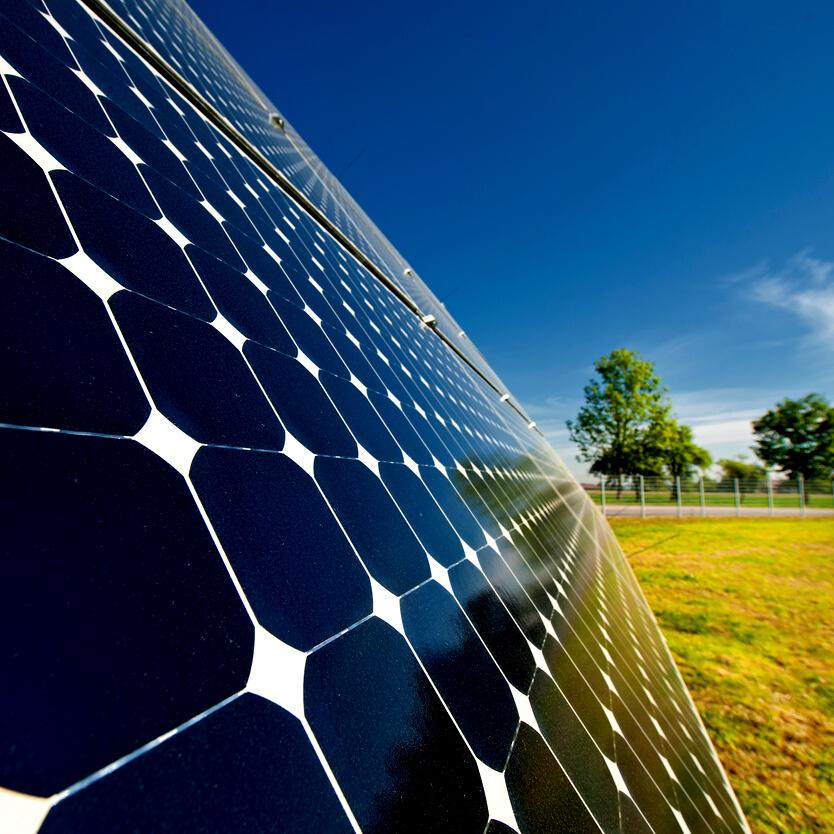
ELSEWEDY ELECTRIC T&D PARTNERS WITH D’JERMAYA SOLAR FOR A 36 MWP SOLAR POWER PLANT IN CHAD



The agreement entails the complete implementation of a 36 MWp Solar PV Power Plant, along with an 18 Km Overhead Transmission Line (33KV) and two step-up power transformers (25 MVA, 90 KV), ensuring seamless integration into the existing network Additionally, an 8 MWh Battery Energy Storage System (BESS) will be incorporated to enhance the plant’s operational efficiency Elsewedy Electric T&D will oversee the entire project, including engineering, procurement, installation, testing, and commissioning, on a turnkey basis

SONANGOL AND ENI UNVEIL FIRST PHASE OF 50 MW CARACULO SOLAR PLANT IN NAMIBE PROVINCE
Angola’s national oil company, Sonangol, along with its partners, have unveiled the first phase of the Caraculo solar photovoltaic plant in the Namibe Province The 50 MW solar power station is being developed by the joint venture between Sonangol and Italian energy company Eni, named Solenova, in two phases The recently launched phase of the solar farm has a capacity of 25 MW and is equipped with 46,000 solar panels. The production test of the plant was started in January this year
RHEINMETALL DENEL MUNITION LAUNCHES SOLAR POWER PLANT IN SOUTH AFRICA, DRIVING TOWARDS CARBON NEUTRALITY
Rheinmetall Denel Munition (RDM), a South African caliber ammunition developer, has launched the construction of a solar power plant at its manufacturing plant near Somerset West The solar energy project, worth R72 million, aims to support RDM’s goal of achieving carbon neutrality by 2035 The 5 MWp solar power plant is scheduled for completion by the end of the year and is expected to create job opportunities for the locals in the town of Macassar. Once operational, the photovoltaic plant will provide sufficient energy to power the RDM plant’s operations RDM also plans to export the surplus energy generated by the solar power plant back to the grid
| AFRICA MAY-JUN ISSUE 2023 | 05 PROJECT >
AFRICA NEWS
KESSES SOLAR PROJECT OF 40 MW IS NOW OPERATIONAL, STRENGTHENING KENYA'S LEADERSHIP IN RENEWABLE ENERGY
APTECH AFRICA DELIVERS SOLAR HYBRID SYSTEM FOR UNDP-FAO OFFICES IN SIERRA LEONE
AFRICA NEWS

CONCOR EXPANDS SOLAR POWER AT EAST GATE SHOPPING CENTER IN GERMISTON, SOUTH AFRICA
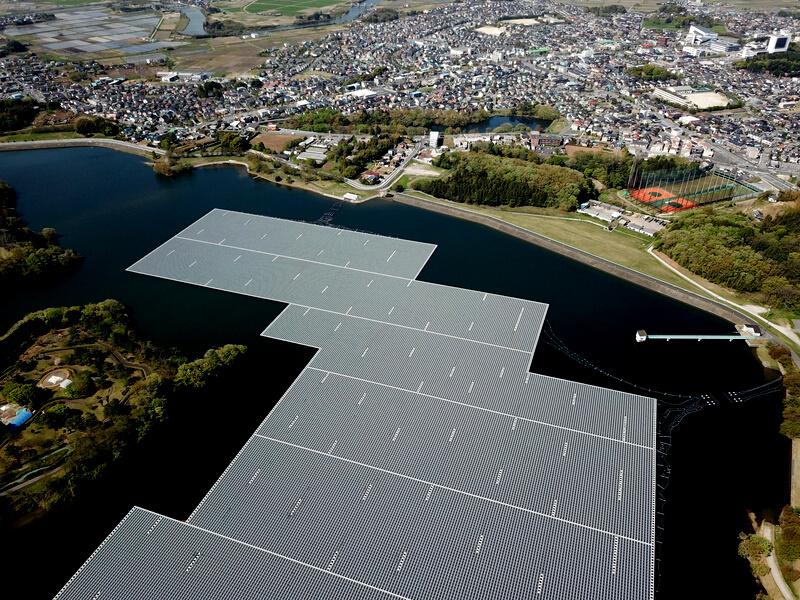
South African construction and mining company, Concor, has started working on a project for the expansion of solar power at East Gate Shopping Center located in Germiston, East Rand region The project will add 5 74 MW of solar power to the existing 1 MW grid-tied solar plant of the shopping mall East Gate Shopping Center received the existing solar PV plant at its parking system in April 2021 The ongoing solar project is in line with L2D’s 2030 net zero targets which include reducing energy reliance on the nation’s unreliable grid and creating good and smart spaces.
CENTRAL AFRICAN REPUBLIC’S FIRST LARGE-SCALE SOLAR PV PLANT GOES LIVE
Aptech Africa completed a project for the UNDPFAO offices in Sierra Leone, where they designed, supplied, installed, and commissioned a solar hybrid system This innovative system incorporates a range of high-quality components, including 15.18 kWp of Soleil Power solar panels mounted on the roof, 42 6 kWh of Lithium-Ion battery storage, and a 10 KVA Victron Quattro inverter along with Victron Maximum Power Point Tracking charge controllers The hybrid system efficiently combines energy from solar, the national grid, and a diesel generator.
SAVANNAH ENERGY SIGNS AGREEMENT FOR 200 MW SOLAR POWER PLANTS IN NIGER

Savannah Energy Niger Solar Ltd , the whollyowned subsidiary of British independent power company Savannah Energy Plc, has signed a memorandum of agreement with the Niger government for the development of two solar photovoltaic power plants. The power facilities will have a combined installed power capacity of up to 200 MW The proposed solar plants will be connected to the South-Central section of Niger’s electricity grid Savannah plans to complete the feasibility studies of the project within the next 12 months. The projects are likely to receive sanctions in 2024 and achieve initial operational status by 2025 to 2026
The Sakai solar power project was funded by the Chinese government and its construction was done by the Chinese company Tianjin Electric Power Construction (TEPC) Co. Ltd. The 15 MW power plant consists of 33,432 solar panels and is built on a 16hectare land It is now owned and operated by Enerca, the principal energy utility company of the Central African Republic The solar farm is the first successfully commissioned large-scale solar PV plant in the country It is currently supplying day-to-day power to factories, schools, and households in Bangui The solar farm is expected to offset around 30% of Bangui’s total electricity demand
TOTALENERGIES SIGNS 260 MW RENEWABLE POWER PURCHASE AGREEMENTS WITH SASOL AND AIR LIQUIDE IN SOUTH AFRICA

TotalEnergies has signed Corporate Power Purchase Agreements (CPPAs) with Sasol South Africa and Air Liquide Large Industries South Africa for the provision of 260 MW of renewable power over 20 years TotalEnergies will build a 120 MW solar plant and a 140 MW wind farm in the Northern Cape province to supply approximately 850 GWh of green electricity per year to Sasol’s Secunda site, located 700 kilometers further north-east, where Air Liquide operates the world’s largest oxygen production site

| AFRICA MAY-JUN ISSUE 2023 | 06 PROJECT >
INVESTMENT >
Africa-focused solar home systems provider, Sun King (formerly Greenlight Planet), and the New York-based global bank, Citi, have collaborated to establish a scalable loan instrument to finance offgrid solar systems in Kenya The organizations have joined hands for a sustainable securitization transaction worth $130 million to support the electrification of underserved communities in Kenya Sun King offers various solutions, including solar lanterns and solar home systems facilitated through a pay-as-you-go system The Kenyan shilling Sun King’s securitization-based financing is in the local currency for electrification and complements other solar energy financing initiatives in Kenya, including the partnership between the US-based solar home systems provider d light and Solar Frontier Capital (SFC), a subsidiary of African Frontier Capital (AFC). Together, they have launched the Brighter Life Kenya 1 (BLK1) facility, valued at approximately KSh 6 5 billion ( $65 million), intending to provide electricity access to 1 2 million Kenyans through solar home systems
ANUVA GREEN ENERGY PARTNERS WITH SOLAR COMPANIES TO ADDRESS SOUTH AFRICA’S ENERGY CRISIS
Anuva Green Energy (AGE), a division of Anuva Investments, a tax-leveraged alternative investment firm, has formed strategic alliances with leading solar energy companies to address South Africa’s energy crisis and meet the growing demand for solar power AGE aims to provide capital through its Green Energy fund to finance solar projects in collaboration with industry experts, EPC firms, and reputable solar companies. The country’s economy has suffered significant losses due to load shedding, estimated to cost between R1 billion and R5 billion per day

WATT SECURES $10M DEAL WITH PROMINENT AFRICAN BANK FOR 5.6MW POWER DELIVERY IN NIGERIA


WATT Renewable Corporation (WATT), the independent provider of sustainable solar power solutions, has agreed to a USD$10m contract with a major African bank to deliver 5.6 MW of power to several sites across Nigeria WATT is a private independent producer of clean energy technology, delivering sustainable energy solutions utilizing an innovative mix of PV, advanced energy storage technology, and genset It provides turnkey EPC and operations and maintenance (O&M) services across Africa, the United States, and Canada
The Phelan subsidiary Solar Capital signed a 20-year Power Sale Agreement earlier this month, with a total value of €565 million for an 86 MW solar PV farm in Loeriesfontein, South Africa. Under the agreement, the power will be sold directly to the national utility, Eskom, with a sovereign guarantee from the South African Government Phelan will also extend its community development program in South Africa’s Northern Cape, where it will now spend over €19 million annually.
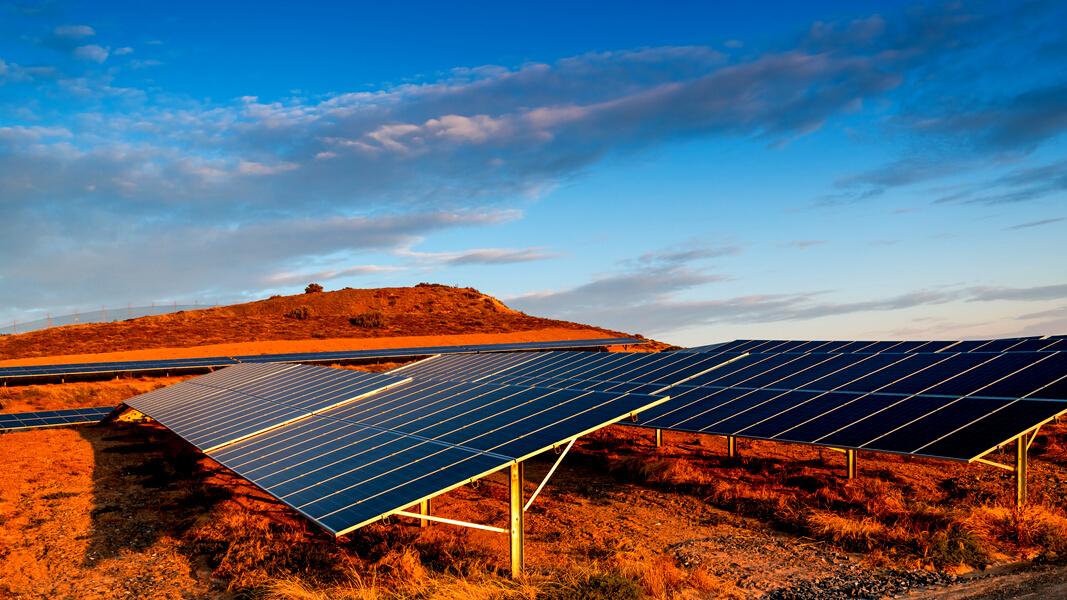
AFRICA INVESTMENT FORUM PRESENTS NEARLY $1.5 BILLION RENEWABLE ENERGY AND SUSTAINABILITY PROJECTS AT 2023 ANNUAL MEETINGS
During the African Development Bank (AfDB) Group’s 2023 Annual Meetings in Sharm El Sheikh, Egypt, the Africa Investment Forum presented four noteworthy renewable energy and sustainability projects with a combined value of nearly $1 5 billion These projects were sourced from the Africa Investment Forum’s pipeline and aim to address the urgent need for climate action in Africa, which is considered the world’s most vulnerable region to climate change. One of the projects showcased was a hybrid hydrogen feedstock/ammonia initiative in North Africa. This project plans to utilize 400 MW of renewable energy to produce 183 tons of hydrogen feedstock and 1,000 tons of green ammonia daily, without emitting CO2 An additional investment of $27 million is required to make the project bankable The second project presented was a 27 MW hydropower venture in West Africa
| AFRICA MAY-JUN ISSUE 2023 | 07
AFRICA NEWS
SUN KING AND CITI COLLABORATE ON $130M SUSTAINABLE SECURITIZATION TO EXPAND OFF-GRID SOLAR IN KENYA
PHELAN ENERGY GROUP’ SUBSIDIARY INKS €565 MILLION AGREEMENT FOR 86 MW SOLAR PV FARM IN LOERIESFONTEIN, SOUTH AFRICA
AFDB GRANTS PARTIAL CREDIT GUARANTEE TO EGYPT FOR PANDA BONDS TO FINANCE GREEN AND SOCIAL PROJECTS
The African Development Bank (AfDB) Group’s Board of Directors has approved a Partial Credit Guarantee of $345 million (equivalent in Renminbi) to Egypt The guarantee aims to facilitate Egypt’s access to the Panda bond market, enabling the country to finance green and social projects By utilizing the Panda Bond market, which involves bonds denominated in Chinese yuan issued by foreign borrowers, Egypt can raise approximately $500 million

OLD MUTUAL INVESTS $21 5 MILLION IN ZIMBABWE’S CENTRAGRID SOLAR POWER PLANT
Pan-African financial services group Old Mutual has announced an investment of $21.5 million in a solar power project in Zimbabwe The funding will be provided by the Old Mutual Investment Group Zimbabwe (OMIZ) which will be utilized in scaling up the capacity of Centragrid Energy Systems Africa PV solar power plant from 2 5 MW to 25 MW The solar power plant is located in Nyabira in the Mashonaland West province It is developed and operated by the independent power Producer Centragrid Private Limited since 2019
SOUTH AFRICA, NETHERLANDS, AND DENMARK LAUNCHES $1 BILLION GREEN HYDROGEN FUND

South Africa, along with the governments of the Netherlands and Denmark, has announced the launch of a $1 billion fund dedicated to green hydrogen This fund is considered crucial for South Africa’s decarbonization efforts as it aims to establish an ecosystem and export hub for green hydrogen, a fuel produced using renewable energy and with minimal greenhouse gas emissions President Cyril Ramaphosa has estimated that achieving this goal would require an investment of 319 billion rand ($17.57 billion). The newly established fund, called SA-H2 and operated by Climate Fund Managers, will provide support to South Africa’s green hydrogen sector The initiative aims to secure $1 billion in funding either directly in South Africa or through other channels Several European nations, including France, Germany, Britain, the United States, and the European Union, have already pledged $8 5 billion to support South Africa’s green transition, including the development of a green hydrogen industry.
EDFI ElectriFI, the EU-funded impact investment facility, has committed to an investment of a $1 5 million convertible note in Vitalite Zambia Ltd , a pioneer of pay-as-you-go solar home systems in Zambia The funding will support Vitalite’s plan of granting access to clean energy to more than half a million Zambians over the next four years The $1 5 million convertible note will be converted into an equity stake in Vitalite Zambia upon its next equity raise
AfDB Launches Tender for 100 MW Solar-Plus-Storage Projects to Enhance Renewable Energy Capacity in Mauritius
South Africa Takes Major Step Towards Clean Energy Future with 3,740 MW Renewable Energy Tender
Landscope Mauritius Issues Tender for 10 MW Solar Project in Bambous

| AFRICA MAY-JUN ISSUE 2023 | 08
>
AFRICA NEWS
INVESTMENT
TENDER >
EDFI ELECTRIFI INVESTS $1.5 MILLION IN VITALITE ZAMBIA TO EXPAND ACCESS TO SOLAR HOME SYSTEMS
Republic of Cuba Invites Bids for 60 MW Solar PV Project under International Solar Alliance Program
JA SOLAR RELEASES ITS NEXT GENERATION MODULE DEEPBLUE 4.0 PRO

JA Solar has released its new n-type module DeepBlue 4 0 Pro at SNEC 2023 Based on a new size of next-generation rectangular silicon wafer, the module is capturing the attention of the industry
The module adapts cells cut from the next generation n-type rectangular silicon wafer size independently developed by JA Solar that features long lifespan and low oxygen content Combined with high-efficiency n-type passivation contact Bycium+ cell technology, the Open Circuit Voltage (Voc) of the cell reaches 725mV and the cell efficiency of mass production reaches 25 3% As well, DeepBlue 4 0 Pro integrates SMBB technology, high-density encapsulation technology, and other technologies improving quality and efficiency, enabling the power of the 72-cell module to reach 630W with module efficiency exceeding 22.5%. Compared to the mainstream 182 series 78-cell modules (2465mm x 1134mm) in the industry, our power is better while reducing the working voltage of the new dimension by 7 6%, which decreases BOS cost for the system and hot spot risk for the modules
The highlight of DeepBlue 4 0 Pro is its 182mm x 199mm silicon wafers, which enables application under multiple scenario Different from other rectangular silicon wafer sizes, the 182mm x 199mm rectangular silicon wafer can keep width of 1134mm while satisfying four mainstream length of modules: 1762mm, 2333mm, 2384mm and 2465mm through different cutting methods DeepBlue 4 0 Pro meets the demands of different application scenarios, such as residential rooftop, commercial and industrial rooftop system and utility power plants.
Similar to earlier DeepBlue 4 0 X, DeepBlue 4 0 Pro has excellent power generation capacity and reliable performance Based on Bycium+ cell technology, DeepBlue 4 0 Pro has outstanding power generation

characteristics, such as lower degradation, better temperature coefficient, higher bifacial generation gain, and better lower irradiance performance
Compared to conventional p-type modules, one-year field test results from JA Solar and TÜV NORD showed that the n-type module with Bycium+ cell has a electricity generation gain about 3 9%, completely proving its power generation capacity Furthermore, DeepBlue 4 0 Pro has passed various rigorous aging tests and all results meet the testing requirements of IEC standards
The industry already comprehensively approved the power generation performance, safety performance, and reliability in various application scenarios of DeepBlue 4 0 Pro At the time of launch, this module had earned these critical certifications: the TÜV SÜD certificate from TÜV SÜD, the Salt mist corrosion certificate, Ammonia corrosion certificate and Dust and sand certificate from TÜV NORD, and Golden Sun Certificate for Photovoltaic Products, Photovoltaic Non-uniform Snow Load Reliability Certification and Photovoltaic Flexible Racking System Compatibility Certificate from CGC
JA Solar's product design philosophy is "tailored to increase customer value", and the better BOS cost and LCOE of DeepBlue 4.0 Pro deliver on this promise. Integrating advantages such as high efficiency, high power, better power generation capacity and high reliability, DeepBlue 4.0 Pro can generate greater profits for customers. When compared to p-type modules in different application scenarios, project types and installation methods, the BOS cost of DeepBlue 4 0 Pro can be reduced by about 2%-4 5%, and the LCOE can be reduced by about 2 5%-6% Compared to the original version of the n-type module, the BOS cost of DeepBlue 4 0 Pro can be reduced by about 1 4%-2 8%, and the LCOE can be reduced by about 0 7%-1 6%
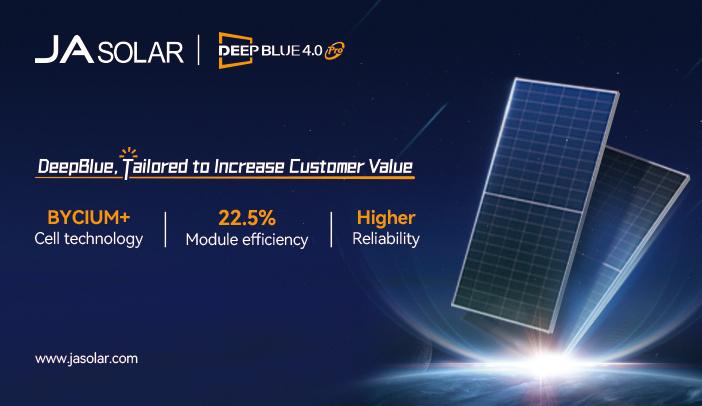
PRODUCT LAUNCH | AFRICA MAY-JUN ISSUE 2023 | 09
KENYA'S SOLAR REVOLUTION
How Renewable E is Transforming t Country

Kenya, known for its abundant sunshine, has embarked on a remarkable solar revolution that is transforming the country's energy landscape
Through the widespread adoption of renewable energy, particularly solar power, Kenya is not only addressing its energy challenges but also experiencing positive socio-economic and environmental changes Let’s explore the key factors behind Kenya's solar revolution and its transformative impact on the nation Kenya, known for its abundant sunshine, has embarked on a remarkable solar revolution that is transforming the country's energy landscape Through the widespread adoption of renewable energy, particularly solar power, Kenya is not only addressing its energy challenges but also experiencing positive socioeconomic and environmental changes. Let’s explore the key factors behind Kenya's solar revolution and its transformative impact on the nation

HARNESSING THE POWER OF THE SUN
Kenya's solar revolution is driven by its exceptional solar resource potential
The country enjoys an average of 5-7 peak sun hours per day, making it an ideal location for solar energy production Recognizing this advantage, the Kenyan government has implemented policies and initiatives to promote renewable energy, particularly solar power This includes the establishment of the Feed-in Tariff (FiT) program, which guarantees fixed payments for solar power producers, and the development of renewable energy auctions, attracting investment and driving the growth of solar projects.
ADDRESSING ENERGY CHALLENGES
One of the key reasons behind Kenya's solar revolution is the need to address energy challenges in the country With a significant portion of the population lacking access to electricity, solar power provides a decentralized and reliable solution Solar home systems, mini-grids, and offgrid solar solutions have been deployed, lighting up rural areas and improving the quality of life for many Kenyans These solar installations not only provide lighting but also power for essential services like healthcare centers, schools, and small businesses, fostering economic development and social progress
ENVIRONMENTAL BENEFITS
Kenya's solar revolution goes hand in hand with environmental conservation
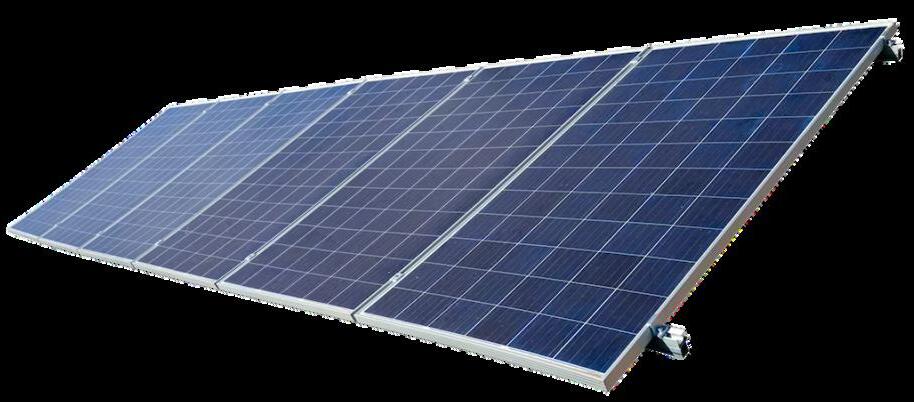
Solar energy is a clean and renewable source of power, reducing dependence on fossil fuels and minimizing greenhouse gas emissions By embracing solar power, Kenya is actively combatting climate change and promoting sustainable development Additionally, solar installations help reduce deforestation and air pollution associated with traditional energy sources The shift towards solar power aligns with Kenya's commitment to the Paris Agreement and its goal of reducing carbon emissions while preserving the country's rich biodiversity and natural resources
ECONOMIC OPPORTUNITIES
The solar revolution in Kenya has created significant economic opportunities The growth of the solar industry has generated employment opportunities across the value chain, from manufacturing and installation to maintenance and service provision Local entrepreneurs and start-ups have emerged, driving innovation and technological advancements in the solar sector Furthermore, the deployment of solar power has reduced reliance on costly diesel generators, resulting in substantial savings for businesses and households. The saved resources can be redirected towards other productive activities, stimulating economic growth and reducing poverty
CONCLUSION
Kenya's solar revolution has not only transformed the country's energy sector but has also brought about positive changes in various aspects of society. The widespread adoption of solar power has improved access to electricity in rural areas, enabling better healthcare services, education, and economic opportunities Moreover, by embracing renewable energy, Kenya is actively contributing to global climate change mitigation efforts and promoting environmental sustainability. The success of the solar revolution is a result of effective government policies, technological advancements, and the entrepreneurial spirit of the Kenyan people As Kenya continues to lead the way in renewable energy adoption, it sets an inspiring example for other nations to follow, highlighting the immense potential of solar power in driving socio-economic development while protecting the planet for future generations

COVER STORY
| AFRICA MAY-JUN ISSUE 2023 | 10
REVOLUTIONIZING SOLAR PROJECT MANAGEMENT: INTRODUCING PNS-ONE, THE ULTIMATE AI BASED SOLAR SOLUTION
In line with our vision of digitalising and speeding up solarisation, we at Power n Sun have created a new tool that will revolutionise how solar EPCs, installers and resellers connect, communicate, initiate and manage their solar projects and the business process of their clients

PnS-One is an innovative, AI-based solar application that is Android, IOS and Cloud-based It provides a seamless and reliable connection with our customers by accessing the App through their unique identity to create, transact, manage and store their data most securely
Pns-One is user friendly, effective and synchronised platform to provide CRM, Sales automation, Solar Site Survey, basic Pv design with detailed site survey reports, SLD, Shadow analysis, 3D visualisation, BOQ, project and inventory management, online market space, post-sales O&M and most importantly, a dashboard to view, control and manage the complete process It has both the features, on-site and back-office desk for practical and real-time connection with employees in the field and office
The PnS-One is the one-stop solar solution for the residential, commercial and Industrial sectors enabling techno-commercial offers in less than 10 minutes, and one can manage the entire solar sales, procurement and installation process in a jiffy, improving the efficiency by more than 500% End users can also use PnS One to plan, install, and monitor their solar rooftop projects, whether Online, Hybrid, or completely off-grid.
PnS-One will launch in more than 20 countries in phase 1 The online market space will have the selected products under the PnS portfolio and one page each for each manufacturing company PnS One has acceptance from most of the principal suppliers of the region
PnS one is available in two versions: Basic, free for all, and the Pro version, which is at a nominal amount The amount paid by the clients will be deducted from the purchases they make from PnS online market space, eventually making it free of cost for the regular users

Critical advantages of PnS market space will be - 100% product availability, hence short site lead time, resulting in optimised working capital deployment, best of the brands and most importantly, excellent prices with Local delivery
PnS-One empowers solar installers, EPCs and resellers and facilitates their business growth. The platform offers a range of features tailored to their needs.

PnS One offers a full suite of features that address common challenges the solar industry faces, especially for small and medium enterprises
Faster Communication: Leverage modern technology to instantly connect your team, regardless of location, facilitating real-time troubleshooting and efficient information sharing
Better Data Collection: Gather comprehensive data to better understand your operations before making critical decisions PnS-One's unified platform collects form data, pictures, and messages, eliminating the need for manual data juggling

Simplified Project Management: Transform project status tracking from a tedious task into a seamless experience. Assign tasks, analyse analytics, and make informed choices with ease
Tailored for Field and Office: PnsOne caters to the unique needs of both on-site and office-bound professionals, fostering seamless collaboration between teams
Streamlined Administrative Work: Automate administrative tasks like report generation and data cleaning, saving valuable time and allowing you to focus on more important matters
Simplified Workflows: Pns One's cutting-edge technology enables efficient management of sales, execution, and operations while ensuring accountability and adherence to timelines.
With Pns-One as your Solar partner, you can unlock the true potential of your solar business Experience enhanced efficiency, streamlined processes, and seamless team collaboration, resulting in better time, cost and quality management.
Take charge of the Solarisation journey and contribute to a greener, sustainable future

TECH FEATURE | AFRICA MAY-JUN ISSUE 2023 | 11 Download App For more information on PnS-One you can contact on Info@powernsun.com +971 4 3686393
LK VERMA
Founder & Managing Director PowernSun

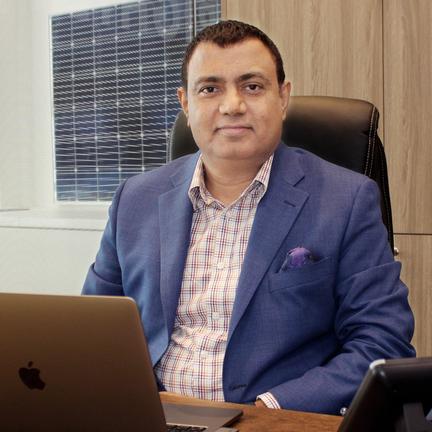

Revolutionizing the Solar Industry: Introducing PNS One, a Game-Changing Software for Streamlined Operations
KEY HIGHLIGHTS
PNS One, a software program developed by Power and Sun, aims to streamline and optimize the entire supply chain process in the solar industry, reducing the time spent from 3 to 4 hours to just 5 to 6 minutes
PNS One stands out from other software options by offering three key modules with critical sub-modules, including lead management and customer relationship management (CRM), solar proposal formation with advanced analysis features, and monitoring and ticketing capabilities
With PNS One, the time-consuming process of sending out technocommercial proposals for inquiries is reduced from 4 to 5 hours to less than 10 minutes, resulting in a 400-500% increase in efficiency for businesses in the solar industry
PNS one, a software program for the solar industry is being introduced by Power and Sun. So how could you introduce and sell this software in the Middle East market efficiently?
PNS One, a software program for the solar industry, is being introduced by Power and Sun However, our main objective is not to sell the software but rather to support our existing clients and simplify their processes The software we have developed aims to streamline and optimize the entire supply chain process, reducing the time spent from 3 to 4 hours to just 5 to 6 minutes Our focus is on facilitating and aligning with our clients to enhance their operational efficiency
The solar sector in the Middle East is expanding and changing quickly. How would you describe Pns One as a ground-breaking and crucial instrument for boosting productivity and streamlining procedures in the sector? How would you set it apart from already available software options on the market?

The Middle East market currently has limited software and applications available for the solar industry However, in Europe and the Indian market, there are a few applications in use PNS One stands out by offering three key modules, each with critical sub-modules Firstly, it provides comprehensive lead management and customer relationship management (CRM) tools for installers, EPCs, and resellers Secondly, it includes an analyzer and solar proposal formation module, encompassing site survey reports, shadow analysis, thread visualization, and CLU (presumably a solar-related feature). Lastly, the software offers monitoring, ticketing, and management features. PNS One caters to the needs of EPCs, installers, and reseller companies in the solar industry.
Currently, the solar industry experiences a conversion rate of around 10 to 15% from inquiries or quotations to actual business However, the process of converting inquiries is time-consuming, requiring approximately 4 to 5 hours to send out a techno-commercial proposal for each inquiry In contrast, with PNS One, the same proposal can be generated in less than 10 minutes This significant reduction in time translates to over a 400-500% increase in efficiency Moreover, the software ensures precise accuracy and offers superior documentation compared to manual processes
How could PNS one, be modified to meet the particular project management, Monitoring and reporting requirements of utility scale projects?
First and foremost, it is crucial to define what falls under the category of C&I (Commercial and Industrial) and utility scale in the solar industry This classification varies from country to country. For instance, in African countries, 10 megawatts or even 5 megawatts may be considered utility scale. However, in India or the Middle East, even 100 megawatts may not fall within the utility scale category As a general guideline, utility scale typically refers to projects above 20-30 megawatts Undertaking such projects requires significant commitment and time from both consumers and companies involved in Power Purchase Agreements (PPAs) and project development
The primary market opportunity lies in the C&I and residential sectors These sectors have a large customer base, and when technology or an industry reaches a wide audience, it becomes more impactful than focusing solely on a few utility-scale projects Our focus has always been on serving the C&I and residential sectors, as these businesses often lack the necessary resources to efficiently manage their solar operations By facilitating and simplifying the solar adoption process for these sectors, we aim to empower businesses and individuals who would otherwise face challenges in accessing solar solutions
FEATURED INTERVIEW
| AFRICA MAY-JUN ISSUE 2023 | 12
Our goal is to boost productivity and simplify procedures in the Middle East's rapidly expanding solar sector, ultimately accelerating the region's solarization process."
In the software sector, data security, and privacy are crucial. When promoting and implementing Pns One in the Middle East, how would you handle worries about data security and privacy?
In today's interconnected world, all countries are part of a global village Operating software applications like ours requires compliance with rules and regulations specific to each country
We have developed PNS One to be accessible through platforms such as Android, iOS, and the cloud. These platforms ensure regulatory checks and adherence to the governing regulations. Additionally, international laws exist to define data usage and privacy, and we have implemented disclaimers accordingly This adherence to legal standards is a standard practice
Furthermore, Powernsun is renowned for its strong business ethics and values Our operations span multiple countries, including Dubai, India, Sri Lanka, Georgia, Morocco, South Africa, Germany, and the Netherlands In each of these locations, we have established legal entities and warehouses This enables us to maintain a highly controlled and aligned environment, fully compliant with local rules and testing regulations. Our commitment to compliance extends beyond a single system or country, and it is a long-term dedication.
The Middle East market for software solutions for the solar industry is competitive and has many wellestablished companies. How may Pns One be promoted as a top software solution to obtain an edge over rivals in the area?
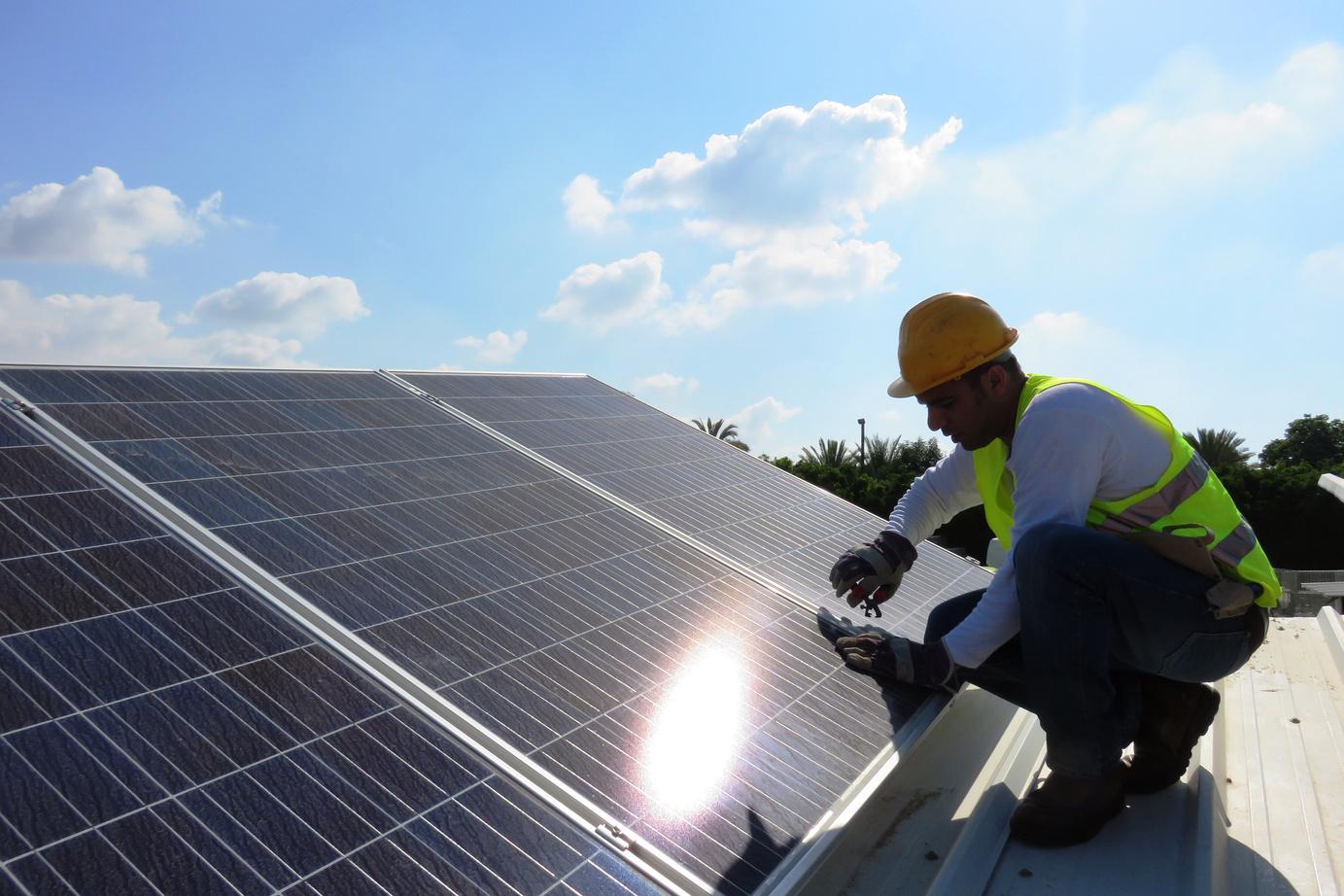
We have developed this software primarily for our internal use, aiming to facilitate our existing clients and expand our client base. The main objective is not to sell the software itself The application is available in two versions: a free version and a professional version with unlocked modules It caters to two distinct groups of individuals: solar engineers who conduct on-site surveys and those who coordinate the process from the office, working together to complete assignments
This software addresses the specific needs of both groups It provides features essential for onsite surveys, such as video documentation to capture location details, measurements, and other important information Additionally, it offers features that help consolidate and compile data in the office environment We have meticulously considered various aspects to ensure the software meets the requirements of solar engineers during site surveys and supports efficient coordination between field and office personnel.
Do you have any plans to launch the PNS One in the market for sale? So that other companies can also use the benefits of the same.
Our primary objective is not solely focused on selling the software While there is a price associated with the software, we have designed it in two versions The first version is free, allowing anyone to download it and engage in a limited set of activities However, we have implemented a time limit on the free version, typically one to two weeks, after which users are encouraged to purchase the software This approach enables us to maintain control over who is using the software and ensures its proper usage
The software is available for a nominal monthly fee of $20 to $25, which may be further discounted for annual payments. When users make the payment, it is converted into credit points that can be utilized in their future interactions with us. This creates a market space managed by our company For instance, if someone has used the software for three months and then establishes a business relationship with us, the amount they paid ($50-$60) during those three months will be adjusted in their subsequent interactions with Powernsun
It is essential to highlight our vision, which is to expedite the solarization process in the regions where we operate Whether it's Dubai or India, we strive to accelerate the solarization process in collaboration with our clients Furthermore, we have expanded our focus to include the digitization of solar energy. Thus, PNS One represents a significant step in digitizing and streamlining the entire solarization process.

FEATURED INTERVIEW
| AFRICA MAY-JUN ISSUE 2023 | 13
WYCLIFFE MWANGI
Technical Sales Manager East Africa GoodWe Technologies


GoodWe's ET series hybrid 3-phase inverters (15-30KW) are designed
KEY HIGHLIGHTS
GoodWe has achieved notable sales growth in Africa, particularly with the successful launch of the ES G2 smart single-phase inverter.
The company intends to concentrate on growth markets like Nigeria, Kenya, and South Africa, with the goal of bolstering its market share and supporting new partners
GoodWe is committed to providing exceptional after-sales service, prioritizing customer satisfaction by offering topnotch technical support and assistance for their products
Can you tell us about the new product GoodWe is launching in Africa? What makes it unique and different from existing products in the market?
GoodWe has recently launched the ET series (15-30KW) hybrid 3 phase inverter models to align with the trend of increasing PV module yield which is influencing overall PV system requirements At the forefront of development, GoodWe’s ET inverters efficiently meet the needs of powerful solar rooftops to facilitate energy back-up, peak shaving and load management for optimised autonomy and reduced energy cost The ET series can be combined with a range of battery capacities and brands, including the GoodWe Lynx Home F. Thanks to the in-built DC type II SPD, the ET series can protect DC side from lightning strikes and save the cost of an external device. The inverters ensure optimised energy automy with the 100% unbalanced output feature to compensate load differences in selfconsumption and backup modes The UPSlevel switching ability ensures the power supply security and reduces the risk of outage for critical loads Another distinctive feature is that ET ( 15-30k) Supports multiple communication protocols for smart home integration and provides DRY contact for interaction with SG-ready heat pumps, 3rd party EV chargers or other large loads
What are the key technology trends in the solar energy industry that you believe will have a significant impact on the African market? How does your product align with these trends?
There is significant increase in the demand for ESS solutions in the Africa market ranging from Residential, Small commercial and Industrial solutions. GoodWe has unique Solutions to align with the differentiated energy Storage systems For small residential space GoodWe offers Lynx Home U series as our low Voltage solution It is a Safe and flexible LV battery system for PV power self-consumption and back-up Featuring lithium iron phosphate (LFP) battery technology with enhanced safety and reliable performance Compatible with GoodWe ES/EM/SBP inverters, the modular battery system is scalable in the range from 5 4 to 32 4 kWh For High Voltage systems, GoodWe Offers Lynx F Plus series as our HV solution The stackable, self-detecting battery modules make the system especially easy to install, while the reliable lithium iron phosphate (LFP) battery cell technology ensures maximum safety Lynx Home F PLUS+ offers a wide capacity range from 6 6 kWh to 16 4 kWh, is compliant to the advanced battery safety standard VDE 251050 and is compatible with GoodWe ET inverters.
What specific benefits and advantages do GoodWe products offer to customers in Africa? How does it address the challenges and needs of the local solar market?
GoodWe is a provider of Quality Solutions with a very wide portfolio solutions to choose from We have quality features that indeed sets us apart from the rest The unique features that GoodWe’s products offer have been endorsed by major suppliers and distributors globally Multiple MPPTs, Compatibility with large format modules, UPS level switch, strong backup ability, high efficiency, rapid installation (plug & play), AFCI & Rapid shutdown are only some of the many features that make GoodWe’s products great GoodWe has been awarded the TÜV Rheinland All Quality Matters Award for ET and ES series and consistently ranks at the top of the list in terms of overall product quality All awarding bodies are independent, and their rankings are based on strict scientific criteria
GoodWe has a strong Research, Development and aftersales team to ensure that we support our products GoodWe takes great pride in offering customers unparalleled after-sales service and we work relentlessly to deliver the best products, the best solutions and the best technical service Our Solutions offer Lower Operating Costs, Faster ROI, Simplified installation and the best operating performance to ensure a faster Return on Investment To enhance equipment safety, GoodWe inverters are featured with Arc Fault Circuit Interrupter, Humidity & Temperature Detection, SPD TYPE II and Anti PID & Rapid Shutdown Design With the appropriate components and a well-designed cooling system, GoodWe inverters can dissipate heat efficiently and keep operating normally even in hot environments
How do you measure the success of GoodWe’s product launch and ongoing sales efforts? What metrics and indicators do you use to track performance and make necessary adjustments?
We've had a lot of success with our product launches, and we've seen a lot of growth in terms of sales revenue in the Africa region For example, since its release in the fourth quarter of last year, our smart single phase inverter ES G2 has gained a significant market share Following the product's launch, we shipped multiple containers to various African countries. With the ongoing effort that our Technical sales team is putting in place, we anticipate a projected growth.We primarily learn about the success of our product launches by gathering information from our Key Accounts and Authorised Distributors and responding to market demands based on their feedback
What are your plans for the remainder of the year?
We have planned a number of activities for the Third and fourth quarters to ensure that we maintain the necessary growth momentum. Some of the key focus countries include Nigeria and Kenya, where we are seeing tremendous growth and where we want to focus our efforts to support our new partners. Our South African market is expanding daily, and we believe this trend will continue throughout the year
for powerful solar rooftops, ensuring optimal PV module yield.
| AFRICA MAY-JUN ISSUE 2023 | 14 FEATURED INTERVIEW
DAVID KA
Managing Direc

Kenya's solar opportunities. energy for
the strong commi
KEY HIGHLIG
Harnessing the pow solar industry illumin greener and more sus
From policy shifts Kenya's solar indu challenges, paving t tomorrow
Innovation meets a Ltds transformative s adoption and revolu market.
Can you highli unique challenges a you've encountered Kenya's Solar Indust

with over 80% of the renewable, the renewab across the country is r rolling out renewable p Kenyan market The hig power also have pus alternative sources and up on the top being fo borehole pumping, bac and off-grid solutions Some of the difficulties experienced include shifting government policies that have been unstable making the market unpredictable, low quality products especially decommissioned and dumped products especially from western markets, marketed as new products affecting efficiency and life span, which affects the market confidence and transfers the solar waste to the country
How does your company engage with local communities in Kenya to ensure that the benefits of solar technology reach those who need it the most?
A few government initiatives have had positive effects on the uptake of solar solutions in the country;
becoming lesser price sensitive and more quality driven. This pull will eliminate naturally the poor quality products in the market making solar more reliable
Nearly all manufacturers in the country (big power consumers) have adopted hybrid solar systems that enables them to lower their power bills by more than half This lowers their cost of production and the many staff members who are working in the companies get to appreciate that the systems do work
Where we have installed solutions in companies and institutions, we have noted a spike in demand from the staff members for their homes within the first 2 years of commissioning
Solar mini-grids have been developed on community levels to supply power to a village through their mostly through their elected representatives
High initial capital outlay This remains as the biggest hinderance to adoption of solar solutions to overcome this, Metrocart undertakes a thorough evaluation of the energy needs, starts by recommending saving actions like retrofitting of lower power consumers bulbs, compressors etc With this, the client can save on running costs even before adoption of solar we then work with the client's available funds and offer modular system that can be grown over a period of time through savings generated We also work with financiers to enable the clients install the complete system for maximum savings without initial capital outlay, buy the power from us at a rate lower than what they would get from National grid, and we hand over the systems within the first quarter of the system life (build operate transfer model)
Through years of market engagement, we have learnt what components works best in our market and as such are able to have different reliable components from different suppliers making up one solution to a client and this has earned us a market reputation of reliable solutions.
How do you navigate the regulatory landscape in Kenya, and what measures do you take to ensure compliance with local policies and regulations?
These local regulations starts at sourcing, we ensure we source products that meets the quality and employ the services of a globally reputable organization for clearing and forwarding, outsourcing the work on tax compliance on this stage to those who specialize in it All our technicians are locally accredited by EPRA( Energy and Petroleum Regulatory Authority) , the regulating body and are re-assessed bi annually for conformity We also have metrocart ltd, accredited and reporting all sites installed to EPRA and inviting them in to have random checks to ensure conformity
INTERVIEW
| AFRICA MAY-JUN ISSUE 2023 | 15
UGOCHUKWU CHUKWUJIAKA
CEO and Founder, Energy Talent Company



The commercial and industrial sector presents a golden opportunity for the Kenyan solar industry to thrive and provide sustainable solutions for businesses aiming to reduce electricity costs.
KEY HIGHLIGHTS
The Revised Solar PV regulation in Kenya is a significant step forward, providing a clear pathway for professionals to advance their skills and knowledge, ultimately benefiting the entire solar industry
The role of Kenyan solar professionals is vital in driving solar technology adoption, as their exemplary work and positive customer experiences create a ripple effect, generating interest and inspiring others to embrace solar solutions.
Empowering micro entrepreneurs in the solar industry not only addresses market saturation but also unlocks their potential to serve larger customers and contribute to the overall growth of Kenya's solar sector
Can you highlight some of the unique challenges and opportunities you've encountered while operating in Kenya's SolarIndustry?
There are both challenges and opportunities in the Kenyan solar industry One notable opportunity lies in the commercial and industrial sector, where there is a growing demand for solar solutions as businesses aim to reduce electricity costs This presents an opportunity for companies to provide solar solutions to industries and small and medium enterprises (SMEs)
On the other hand, the pico solar systems market appears to be saturated While this market has the potential to provide income-generating opportunities for micro entrepreneurs, it seems that many individuals have already tappedinto this market
Considering these circumstances, there is a valuable opportunity to address the saturation in the pico solar market by leveraging the existing sales skills of micro entrepreneurs who have been involved in selling pico systems By
providing them with additional training and competencies, they can successfully transition into servingmore complex customers and tap into the growingcommercial and industrial vertical
By focusing on enhancing the sales skills of these micro entrepreneurs they can expand their expertise beyond the saturated pico solar market This will enable them to effectively engage with larger businesses and industries that are seeking solar solutions to reduce their electricity costs With the right support and development, these micro entrepreneurs can play a pivotal role in meetingthe demands of the commercial and industrial sector
In summary, the opportunity lies in empowering micro entrepreneurs who have alreadyacquired sales skills through their experience in the pico solar market By equipping them with the necessary competencies, they can seize the growing opportunities in the commercial and industrial vertical and contribute to the overall growth and development of the Kenyan solar industry
Could you discuss any specific policiesor government initiatives in Kenya that have either facilitated or hindered the growth of the solar industry?

One specific policy in Kenya that will facilitate the growth of the solar industry is the Revised Solar PV regulation which introduces more granular competency levels This policy has provideda framework for defining the specific skills and capabilities required for different levels within the industry such as T1 and T2 while starting the licensing at 400W instead of 100W in the 2012 regulations
By providinga revised scopeof project definition, this policy can help streamline training and career development for individuals in the solar sector It creates a clearer pathway forprofessionals to advancetheir skills and knowledge, ultimately
benefiting the industryas a whole This allows for betteralignment between job roles and skill requirements, which in turn can contribute to improved efficiency and professionalism within the solar industry.
In your experience, what role do you see the Kenyan people playing in driving the adoptionof solar technology? Are there any notable successstories or examplesof community involvement?
In our experience the Kenyan people especially the Solar Professionals play a crucial role in driving the adoption of solar technology The solar professionals who directly interact with end users have the responsibility of being exemplary brand ambassadors for solar Theirprofessionalism and the quality of their work can attract aspiring students and professionals to pursue careers in the solar industry By delivering high-quality installations and services, they can createenthusiastic customers who, through word of mouth, share their positive experiences and generate interestin solar among others
I would recommendkeeping an eye on the initiatives and activities of the Energy Talent Companyas we have planned specificefforts in this regard.
INTERVIEW
| AFRICA MAY-JUN ISSUE 2023 | 16
Can you share any innovative technological solutions or advancements your company has implemented to overcome specificchallenges in the Kenyan market?
When it comes to navigating the regulatory landscape in Kenya, it is crucial to foster collaboration and open communication between private sector players and regulators. Rather than operating in isolation and engaging in finger-pointing, it is essential to recognize that both partieshave shared goals
To ensurecompliance with local policies and regulations, our approach involvesbuilding strong relationships with regulators We understand the importance of maintaining regular and constructive dialogue with them By doing so, we can effectively convey the feedback and insights we gather from the market and end users, which can help inform the development of regulatory policies
Furthermore, we recognize that regulators aim to establish and uphold standards, while private playersstrive to deliversatisfactory services to customers and generate profits We believe that these goals are not inherently contradictory By working closely with regulators, we can find common ground that alignswith both the regulatory requirements and our businessobjectives
In summary, our strategy for navigating the regulatory landscape in Kenya revolves around establishing close relationships with regulators We prioritize open communication and provide valuable market feedback to inform policy decisions By collaborating with regulators, we aim to ensure compliance with local policieswhile delivering satisfactory services to our customers and contributing to the growth and development of the industry
How does your companyengage with local communities in Kenya to ensure that the benefitsof solar technology reach those who need it the most?

We have not startedthis yet, watch this space

INTERVIEW
| AFRICA MAY-JUN ISSUE 2023 | 17
By fostering collaboration and open communication between private sector players and regulators, we can navigate the regulatory landscape in Kenya, ensuring compliance, delivering satisfactory services, and fostering industry growth and development "
JULIE GREENE

Managing Director, Renewvia Solar Africa


Shining
a light on Kenya's solar industry, this interview delves into the unique challenges and opportunities faced by operators in the country.
KEY HIGHLIGHTS
Well-developed regulatory environment and tax exemptions: The Kenyan solar industry benefits from a favorable regulatory environment, including tax exemptions on solar imports. This reduces project risks and allows for predictable development timelines, boosting investor confidence
Public development sites remaining undeveloped: Despite identifying portfolios of sites for public development, many of these sites have remained undeveloped for several years Opening these sites to private developers could accelerate the provision of clean electricity to underserved areas
Challenges with KPLC distribution line buffer zone: One major challenge in Kenya's solar industry is the 15km buffer zone around KPLC distribution lines, which restricts private development.
Can you highlight some of the unique challenges and opportunities you've encountered while operating in Kenya's Solar Industry?
The Kenyan market for off-grid has some key benefits such as a well-developed regulatory environment, certain tax exemptions on solar imports, and a history of private off grid solar development These factors can allow for lower risk on projects, as well as the ability to reasonably predict timelines for development as compared to some other markets, which can be critical for investor confidence One big challenge is the 15km KPLC distribution line buffer zone, within which we are not allowed to pursue development This eliminates many unelectrified communities, that would be viable off grid solar sites, from private development There are also portfolios of sites that have been identified and flagged for public development only, which still remain undeveloped after several years If these sites were made available
for private developers, we could quickly provide clean electricity Unfortunately, the shielding of many productive areas from private development is resulting in very few viable sites left, and thus eliminates Kenya at this time from being a large growth market for many private solar off-grid developers
How does your company engage with local communities in Kenya to ensure that the benefits of solar technology reach those who need it the most?
Our business development and regulatory teams stay in close contact with County Governments to identify communities that remain unelectrified and which would benefit substantially from electricity access From there, our dedicated community engagement team members collaborate with community leaders and committees once we have identified a community that fits our site selection criteria Part of the engineering design process includes site surveys, which consider not only technical detail but also a survey of the community and engagement with community members to assess who wants to be connected, what kind of connection they want (commercial or residential), and what other institutions such as health centers schools water pumps etc should be built into the design, even if they are out of the main distribution zone Once developed, the site agents, hired from within the community, stay up to date on current customer needs as well as potential new customers, to ensure we are meeting their needs
Could you discuss any specific policies or government initiatives in Kenya that have either facilitated or hindered the growth of the solar industry?
As mentioned earlier, certain policies are very helpful and initially helped the solar off grid market grow in Kenya, such as a clear and wellorganized regulatory process and the import VAT
and duty exemptions on solar panels and batteries Others, like KOSAP, a program funded by the World Bank in conjunction with the Kenyan government, aims to electrify a large number of underserved communities through publicly developed minigrids Unfortunately, several years after rollout, most sites remain unserved If this was opened to private developers, we could quickly develop the sites and provide the energy they are in much need of Similarly, the KPLC buffer zone which prohibits development of unserved communities near or even under KPLC distribution lines has substantially hindered further growth in the market When we look to where we can develop 50, 100, 200 mini-grid sites a year, we are looking to markets that have essentially opened all areas to private development and which have enough demand to support that kind of scaling up
In your experience, what role do you see the Kenyan people playing in driving the adoption of solar technology? Are there any notable success stories or examples of community involvement?
We see innovation and acceptance of solar in all the communities we work in In many places, we already see plenty of examples of solar products in use, from solar home systems to solar lights for nighttime fishing or household use Still, our solution provides a much more reliable option to communities, as we build solar plus battery storage solutions, allowing for very consistent access to electricity and the ability to power more than lights and phone charging Our mini grids can power small business with fridges, freezers, small appliances, electric mills, and more We see a high interest in transitioning from diesel powered equipment like welding and milling, and we are able to work with customers to find the best option that can tie in with our minigrid As the cost of diesel continues to go up, there is an obvious draw to solar, and our customers are no exception in seeking more ways to use solar power for their home and business needs.
INTERVIEW
| AFRICA MAY-JUN ISSUE 2023 | 18
Can you share any innovative technological solutions or advancements your company has implemented to overcome specific challenges in the Kenyan market?
One way we have eased what can be a complicated and risky operation is our payment process We have developed an in-house integration between our meters and the Kenyan payment platform, M-PESA All of our customers have a unique meter serial number and customer account number and can make payments in any increment using M-PESA Within seconds of the payment being made, the corresponding units are credited into the meter and ready for use This easy pre-payment process ensures that our customers can buy energy on demand, at any time of the day or night, and that we do not have to handle cash payments or defaults
Due to the remote locations of most of our sites, our ability to monitor system performance remotely is also critical to our success. We have integrated all aspects of our powerhouse and customer smartmeters so that we can troubleshoot from afar and quickly relay needs
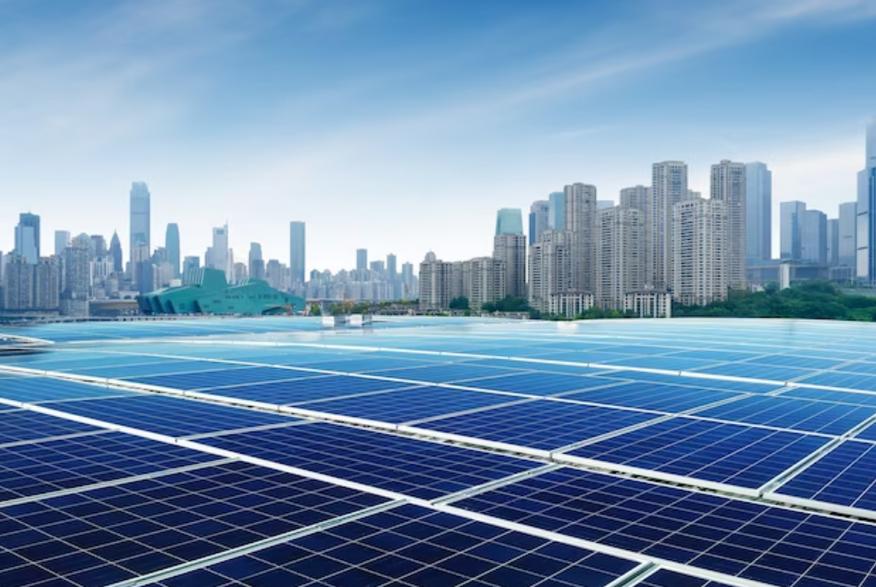

to the on-site agent and technical team to solve problems in real time. Our system monitoring collects thousands of datapoints every hour, and we use this to enhance site performance For example, we can adjust tariffs based on the optimal consumption at various hours of the day, encouraging more daytime use when we have the most capacity
Another example would be our Productive Use of Energy projects We work with communities individually to determine what additional services can be integrated into the mini-grid, such as connecting community boreholes, bringing water purification services, or helping business owners transition from diesel powered mills to electric mills All of these are done in collaboration with the community to ensure success within our grid’s capacity and their business or community needs, and leverage our ability to connect with manufacturers and other businesses to introduce new products or equipment that might otherwise not be introduced in these areas In many cases, we can align these services to operate when a grid has excess capacity, using our remote monitoring systems to detect and optimize timing and prices of certain services.
How do you navigate the regulatory landscape in Kenya, and what measures do you take to ensure compliance with local policies and regulations?
The regulatory processes in Kenya are generally clear and straightforward. We follow the processes as outlined in terms of getting the right permits and licenses at each stage of development and construction, from community MOUs to construction permits to distribution and electricity sales licenses to tariff approvals It’s important to maintain good relationships with all levels of government and leadership- from national to county to community levels We work closely with our partners on each level This builds a good long-term relationship, which is critical as we will operate our sites for at least 20 years, and also helps us stay aware of any changes in the process that we need to adapt to We have been operating in Kenya for over 8 years, with 24 sites currently and growing in 2024 to over 20,000 connections Relationships and compliance are very important to our ongoing success
INTERVIEW
| AFRICA MAY-JUN ISSUE 2023 | 19
CATHY KUYOH
Head of Credit- East Africa, Starsight Premier Energy Group (SPEG)



KEY HIGHLIGHTS
Growing Demand for Solar Projects in Kenya has spurred the need for clean and renewable energy solutions due to economic growth, urbanization, and population expansion.
Solar project financing in Kenya relies on national government funds, private sector capital, and contributions from international development aid agencies and Development Finance Institutions
Securing financing for solar projects in Kenya faces challenges such as high upfront costs, creditworthiness concerns, political and economic risks, and inadequate modeling data on renewable energy, while creditworthiness assessment and financial viability evaluation are essential steps in the financing process.
Can you provide an overview of the current financing landscape for solar projects in Kenya?
The necessity for clean and renewable energy solutions in the region is at an all-time high. The demand for reliable and affordable energy has grown concomitantly to the continent’s economic growth, industrialization, increasing urbanization and rapid population growth in recent years
Financing for solar projects in Kenya is generally sourced from three different channels: national government funds, private sector capital, contributions by international development aid agencies, and Development Finance Institutions Such funding is then utilized for onward lending or investment in various businesses that have qualified for the development of solar PV plants
Given the number of specialized vehicles raising exclusively clean and renewable energy focused funds currently on the market, we can expect the solar industry to continue its ascent in the near-
and long-term future Starsight Premier E Group (SPEG) in June 2023 secured US million funding to increase its portfolio of renewable energy Commercial & Industrial projects in East Africa The significance of energy infrastructure investments facilitating renewable energy in Kenya and the resource intensity of the same is likely to intensify the appetite for and uptake of private debt
What are the main challenges in securing financing for solar projects in the Kenyan market?
Solar projects have a high upfront capex and are long-term in nature and this causes a barrier to the initial development and funding of projects This coupled with concerns about the borrower’s creditworthiness (or consumer credit risk, particularly in the case of off-grid markets) cause expensive delays or result in a high cost of capital
At the transactional level, real or perceived risks continue to prevent many financiers from committing their capital to solar projects, despite the promise of the market Chief among the risks that financiers cite are political risks (such as political stability and the rule of law), governance and safety issues, off-taker risks and economic risks, including those linked to foreign exchange (large currency fluctuations and currency inconvertibility).
Additionally, there is Insufficient Modelling Data regarding renewable energy at the country-level This data is critical in informing private sector investment decision-making Private sector entities are likely to continue to have a limited understanding of the solar energy landscape, further limiting their ability to assess potential rates of return on investment (ROI) and to take appropriate risks
From a borrower’s perspective, they struggle with the availability of appropriate financing instruments (in particular, affordable long-term debt) in local markets; matching funds and risk-
mitigation tools; and know-how for structuring and financing transactions They may also be concerned about the relatively small transaction sizes
How do you assess the creditworthiness of solar project developers or companies seeking financing?
Starsight Premier Energy Group (SPEG) has the in-house capabilities to offer our clients finance facilities for their solar PV systems. The 5Cs credit appraisal model that we adopt: character, capacity, collateral, contribution and control has elements that comprehensively cover the entire areas that affect risk assessment and credit evaluation
In order to ensure taking exposure only in acceptable credits, we undertake a detailed credit evaluation once the borrower provides us with various KYC documents that we request The credit assessment exercise includes an analysis of the borrower’s business and financial profile, industry overview, management quality and collateral offered for the facility The process will include not only a diligence on the company’s financial statements and other documents but also visits to a borrower’s facilities and direct interactions with the promoters/ senior management. This is done so as to broadly understand the client business operations and engage with the operating personnel to discuss all key business and financial risks as well as assessing their depth of understanding and expertise
We may also request and rely on additional information from the client or from other sources such as financial reporting agencies, press and other 3rd parties In turn, we work out the most appropriate structure for the facility after considering credit, economic, tax, environmental and regulatory considerations Our primary focus of is to identify the borrower’s capacity to repay on time which is not contingent on a future event unless such event be assured and clearly within the reasonable business expectations of the borrower
INTERVIEW
The financing landscape for solar projects in Kenya presents opportunities and challenges, with increasin interest from investors but a need for supportive policies to drive sustainable growth.
| AFRICA MAY-JUN ISSUE 2023 | 20
What are the key factors you consider when evaluating the financial viability of a solar project in Kenya?
Prior to financing a project, we consider appropriate financing models, customized to client requirements, utilization of potential incentives, tax impact, on balance vs off balance sheet preference, etc
Whereas, after financing a project, monitoring timely payment of dues compliance of information covenants, credit assessment and technical performance of the assets is reviewed periodically It is therefore imperative to maintain regular interaction with the borrower so as to keep a close watch on credit related developments This helps in early detection of any material deterioration to their credit risk profile and ensure that remedial measures are in place to safeguard the facility exposure
What types of financing options or instruments are commonly used for solar projects in Kenya?
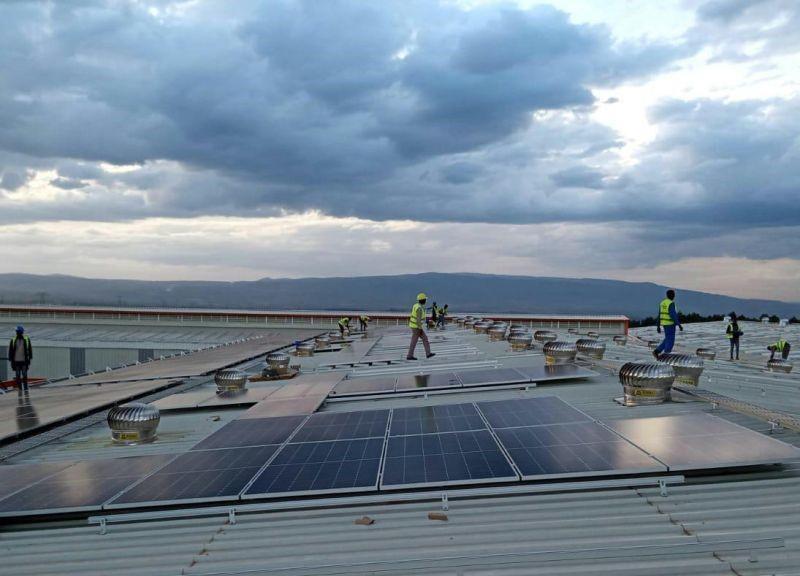
Converting to solar is certainly a large capital investment, but it’s one that can pay off with lower utility costs There are various solar photovoltaic (solar PV) financing options that have emerged over the recent years for industrial & commercial businesses This includes, but is not limited to, asset finance, operating lease or rental agreements, Power Purchase Agreements (PPAs) and outright purchase The exact type of finance structure available would be dependent on the impact on financial statements, performance metrics, system size, client characteristics, capital among other factors
The most favoured financing options for solar PV systems in Kenya are asset finance and operating leases PPAs are progressively being considered the most readily accessible off-grid energy solution but delays in regulatory approvals are a current barrier to their growth Through our financing arm, we are able to champion industries in East Africa to not merely keep pace in accelerating a carbon free future, but thrive in their business operations by availing all three of these financing options
How do you mitigate the risks associated with lending to solar projects, such as regulatory changes or fluctuations in energy tariffs?
Governments, businesses and investors must join forces and each play their part For governments, this means creating the appropriate national conditions - through climate policies, public financing frameworks, and green growth opportunities - in which the private sector can confidently invest Businesses also need to consider and assess climate-related risks and opportunities in their business models, whilst investors do the same to make informed capital allocation decisions and better embed climate consideration throughout their investment portfolios.
For investors, and in particular lenders, to be comfortable with the risks involved in lending to solar projects, additional credit enhancement and risk-mitigation cover is required There are common instruments to minimise, hedge or transfer the main categories of risk a transaction may encounter These include guarantees, property, specialised insurance products, fully funded escrow accounts and termination clauses
in the case of power purchase agreements They are also typically provided on a project-by-project basis or as a bundled package for projects
What role do government policies and incentives play in attracting financing for solar projects in Kenya?
Changes in legal or regulatory policies erode investor trust Governments must adopt policies and other measures to create an enabling environment that will attract local and foreign investors. The public sector can also take actions to de-risk projects and mobilise private capital via blended finance initiatives and take advantage of emerging solutions and business models
Among the fiscal policies that render solar projects more affordable are tax exemptions, and capital depreciation/capital allowances In Kenya, the Draft Captive Power Guidelines 2021 around captive solar is currently being amended and are in draft form These Guidelines apply to captive power plants installed in commercial, industrial, and institutional facilities Among the polies being proposed that will promote the growth of solar energy in Kenya is for a grid connected captive power plant of 1 MW and below, developed for own use and not for sale of electricity, the plant owner shall not be required to obtain generation licence
It’s important to note that EPRA, the regulator in Kenya, confirmed that Net Metering regulations are being enacted presently and the first net metered projects should be online in late 2024 / early 2025 They also confirmed that discussions are ongoing with regards to announcing regulations for the introduction of Open Access (wheeling) in Kenya.

INTERVIEW
| AFRICA MAY-JUN ISSUE 2023 | 21
Our primary focus of is to identify the borrower’s capacity to repay on time which is not contingent on a future event unless such event be assured and clearly within the reasonable business expectations of the borrower "
SIMON GRAAFF
Head Of Engineering, Ariya Finergy Holdings Limited

Solar power has a strong case in Kenya due to its favorable weather and position on the equator, offering consistent and reliable energy throughout the year.
KEY HIGHLIGHTS
Kenya's favorable weather and position on the equator present a massive opportunity for solar power to compete as a consistent and reliable source of energy throughout the year
Overcoming unique challenges such as impassable routes, elephants blocking roads, and using small boats to transport materials is all in a day's work for the Ariya Finergy team
Millions of Kenyans understand the impact of energy in empowering communities, and we welcome the enthusiasm of young Kenyans with strong technical skills to provide innovative power solutions
Can you highlight some of the unique challenges and opportunities you've encountered while operating in Kenya's Solar Industry?
Kenya is ideally positioned for solar energy in many ways Being on the equator and having favourable weather creates a massive opportunity for solar power to compete as a consistent and reliable source of power all year round, which does not suffer from the seasonality of many other areas of the world The case for solar is thus particularly strong in this market In rural areas where power is produced by diesel generators, there is a significant opportunity to offset carbon intensive power sources with clean distributed generation such as solar.
The size of the country, variety of terrain, and numerous well-preserved natural areas create logistical hurdles for moving materials to remote locations We have built projects in challenging locations including game parks, coastal islands, and rural farms We have had to overcome unique issues, such as elephants blocking roads, rains making routes impassable and having to use small boats to move material across the sea
But such challenges are all in a day’s work for the Ariya Finergy team, who bring their innovation mindset to all their projects
How does your company engage with local communities in Kenya to ensure that the benefits of solar technology reach those who need it the most?
With our fully-fledged Research & Development department we are designing home-grown technology solutions which localize technical knowledge and help build the support industries needed to advance cutting-edge products We at Ariya believe Kenya has the skills and infrastructure to support high-tech engineering in the energy space and where we lead, we hope others in the region will follow our example
Could you discuss any specific policies or government initiatives in Kenya that have either facilitated or hindered the growth of the solar industry?
Kenya has a well-regulated solar industry where the governing body, the Energy and Petroleum Regulatory Authority (EPRA), certifies solar companies, technicians, and projects This ensures that the quality of technicians and projects in the market are up to the necessary standards to deliver the performance clients expect, at a high level of safety Furthermore, encouraging signs from the Kenyan government, affirming its commitment for easier access to clean energy, became reality when the government reinstated VAT exemptions on renewable energy products
In your experience, what role do you see the Kenyan people playing in driving the adoption of solar technology? Are there any notable success stories or examples of community involvement?
Millions of Kenyans remember a time when there was limited or no power access in rural areas and thus have an understanding for the impact that energy can play in empowering communities and driving industry We see a number of young Kenyans who are highly motivated to make a difference with their
strong technical skills to provide innovative power solutions and we welcome their enthusiasm on our team


Ariya recently commissioned a 999kWp solar PV roof-mounted system at a leading textile manufacturer in Thika, Kenya The employees of the organization were invited to take part in the commissioning celebrations which highlighted the importance of the company adopting solar PV as part of their renewable energy policies. The staff were encouraged to take the benefits of solar PV to their communities and promote renewable energy initiatives
Can you share any innovative technological solutions or advancements your company has implemented to overcome specific challenges in the Kenyan market?
Ariya has developed an innovative Power Stabilization product which ensures stable, uninterrupted, seamless, and high-quality power for customers who experience inconsistent grid quality This allows users to have consistent and dependable power solutions regardless of the grid conditions Business and local industry are interested in this solution as it means they can operate without interruption or other energy hurdles and take advantage of cutting edge technology right here in East Africa
How do you navigate the regulatory landscape in Kenya, and what measures do you take to ensure compliance with local policies and regulations?
Ariya employs specialist in-house legal and procurement practitioners to ensure that we are always up to date with the latest legislation and customs requirements, which is crucial to allow us to navigate an ever-evolving regulatory environment.
The future in the renewable energy sector in East Africa is as bright as the Maasai Mara sun, and Ariya is proud to be a leader in this booming sector
INTERVIEW
| AFRICA MAY-JUN ISSUE 2023 | 22
SOLAR POWER SOLUTIONS FOR OFFGRID COMMUNITIES IN KENYA

A vital prerequisite for the advancement of society and the economy is access to electricity
However, the absence of dependable electricity infrastructure continues to be a major problem in many areas of Kenya, particularly in remote and off-grid settlements Solar power solutions have become a game-changer in recent years, providing a sustainable and affordable way to bring electricity to these unserved areas Let's examine the significance of solar power options for Kenyan villages living off the grid
Off-grid communities in Kenya frequently rely on pricey and wasteful alternatives, such as diesel generators or kerosene lamps, to meet their energy demands These choices have detrimental effects on the citizens' health and the environment in addition to being expensive for them Solutions for solar power generation offer a long-term, cost-effective, and environmentally friendly alternative
Scalability is one of the main benefits of solar power options Systems that range from tiny household installations to bigger microgrids supporting several families and public facilities can be customized to fit the unique needs of a community This scalability enables a flexible and phased approach to electrification, guaranteeing resource efficiency and allowing communities to gradually increase their access to energy
Solar panels, batteries for energy storage, and inverters for transforming solar energy into usable electricity are frequently used as part of solar power solutions for off-grid populations. Together, these elements capture solar energy throughout the day, store extra power, and generate electricity at night or when it is cloudy To reduce energy usage even further, LED lighting systems and energy-efficient appliances are frequently combined
Off-grid villages need to prepare carefully and involve the community in the implementation of solar power solutions. Governmental and nongovernmental organizations are crucial in advancing these projects To empower local communities and guarantee the long-term sustainability of the initiatives, they offer technical assistance, financial support, and capacity-building programs.
Solar power solutions not only meet energy needs but also have several socioeconomic advantages Opportunities for education, healthcare, and revenue-generating are expanded by having access to electricity Schools can offer consistent lighting for learning, while hospitals can cool vaccines and run medical machinery With expanded hours and access to electric-powered equipment, small enterprises can prosper
Additionally, solar energy options help to lessen greenhouse gas emissions and combat climate change They contribute to reducing carbon dioxide emissions and improving air quality by replacing fossil fuel-based energy sources, which benefits community health Additionally, switching to solar energy lessens dependency on foreign fuels, boosting energy independence and supporting regional economic growth
Despite the obvious advantages, scaling up solar power solutions in off-grid areas still presents obstacles As upfront expenses can be a barrier for both individuals and community-level installations, financing is a significant impediment To make solar power solutions more accessible and inexpensive, new financing models are being used, such as pay-as-you-go systems or microfinance
To encourage investments and establish an enabling environment for solar power projects, policy support, and favorable regulatory frameworks are essential Governments and other stakeholders must work together to create sensible regulations, reorganize bureaucratic processes, and offer financial incentives to entice the private sector to participate in off-grid solar technologies
In conclusion, solar energy options could significantly improve the quality of life for Kenyan communities that are off the grid. In addition to providing a cost-effective and sustainable source of electricity, they also enhance living circumstances, open up business prospects, and support environmental sustainability. Solar power solutions may empower off-grid areas close the energy access gap and open the door for a better and more egalitarian future for all Kenyans with continuous investment, encouraging policies, and community involvement

K N O W L E D G E B Y T E S
| AFRICA MAY-JUN ISSUE 2023 | 23
ENERGIZING RURAL TRANSFORMATION:
Illuminating the Profound Impact of Solar Power on Kenya's Remote Communities, Empowering Livelihoods and Fostering
Development
 Sustainable
Sustainable
It is impossible to emphasize the positive effects of solar energy on Kenya's rural villages Solar energy has become a game-changer since a sizable section of the population lives in rural areas with no access to electricity. Its adoption has resulted in transformational transformations that have empowered these communities by offering safe, inexpensive, and dependable energy options Between urban and rural communities, solar electricity has facilitated better access to economic medical and educational opportunities This article examines the significant effects of solar energy on rural Kenyan communities, emphasizing its contribution to improving livelihoods, fostering sustainable development, and enabling people to thrive in previously underserved areas
ENERGY ACCESS AND EMPOWERMENT
Human growth requires everyone to have access to electricity, and solar energy is helping Kenya's rural villages close the energy gap Solar home systems and mini-grids provide dependable and inexpensive electricity to homes, enabling families to access contemporary conveniences like lighting and communication tools After-dawn study hours allow for better educational results for kids Women no longer need to perform timeconsuming and dangerous duties like gathering firewood and using paraffin lamps, allowing them to participate in activities that generate cash and further their education. Rural communities gain independence and dignity when they have access to electricity, which promotes social empowerment and a sense of belonging.
IMPROVED EDUCATION
Rural Kenyan schooling has been transformed by solar energy Solarpowered lights and gadget charging stations are now available in schools that were previously without electricity. This makes it possible to study for longer periods, in better educational settings, and with digital learning resources. Lessons may be planned more efficiently by teachers, and students have access to instructional materials that go beyond textbooks With the advent of solar-powered computer laboratories kids now have access to digital literacy and are more prepared for the modern world Solar energy integration in schools not only boosts academic performance but also encourages a new generation of young people to continue their education and support the growth of their communities
ENHANCED HEALTHCARE SERVICES
Healthcare services in rural Kenya are being significantly improved by solar power To store vaccines and medications that need to be kept cold, many hospitals and clinics now have solar-powered refrigerators. This eases the strain on patients who previously had to travel great distances for basic medical care by ensuring the availability of life-saving medications in rural ch as ultrasound machines are powered by solar gnostic services. In addition solar energy
makes it easier to supply lights in hospitals, permitting deliveries at night and emergency treatment In remote areas, the provision of dependable power improves the standard of healthcare services, resulting in better health outcomes and life savings
ECONOMIC OPPORTUNITIES AND ENTREPRENEURSHIP

Kenya's rural villages now have more economic prospects because of solar energy The construction and expansion of small companies like retail stores, phone charging stations, and hair salons are made possible by the availability of energy Solar-powered irrigation systems have revolutionized agriculture, improved crop yields, and allowed farmers to produce high-value crops Solar professionals are starting to emerge as business owners, offering installation and maintenance services, which generates job prospects in the neighbourhood In addition, the development of cottage industries, such as water purification and processing facilities powered by solar energy, supports regional economic growth Solar energy's ability to economically empower people helps rural communities create sustainable livelihoods and reduce poverty
ENVIRONMENTAL SUSTAINABILITY
Rural populations can profit directly from solar power, and it also supports environmental sustainability Solar power lowers harmful pollutants and indoor air pollution by substituting conventional energy sources like kerosene lamps and diesel generators This lessens the harmful health consequences of conventional energy sources and helps to create a cleaner, healthier environment Furthermore, as people no longer rely on firewood for cooking and lighting, the use of solar energy lessens pressures on deforestation Kenya's commitment to sustainable development and the international effort to prevent climate change are both supported by the switch to renewable energy
CONCLUSION
It is impossible to emphasize the positive effects of solar energy on Kenya's rural villages It has caused a paradigm shift, improved lives and presenting fresh possibilities Individuals now have more power thanks to electricity, which has also improved healthcare, education, and access to healthcare Additionally, the use of solar energy supports environmental sustainability, paving the way for a cleaner and healthier future. However stakeholders need to keep funding solar infrastructure, encouraging entrepreneurship, and enacting supportive regulations to maintain and broaden these beneficial changes By doing this, Kenya can fully utilize solar energy, assuring a better future for its rural populations and paving the path for a more inclusive and sustainable society.

SOLARQUARTER RESEARCH SPECIAL
STORY
| AFRICA MAY-JUN ISSUE 2023 | 24
KENYA'S SOLAR FARMS: HARNESSING THE POWER OF THE SUN AT SCALE

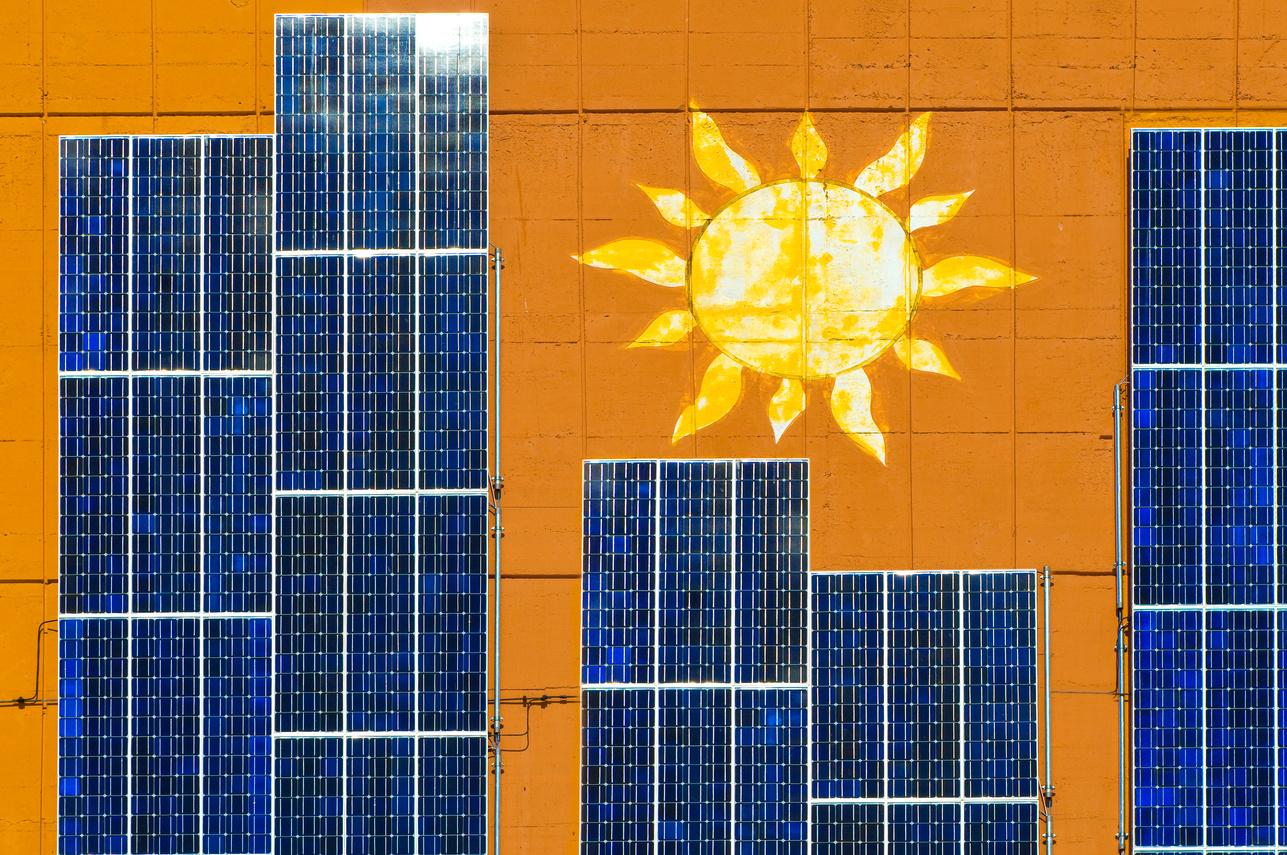
Kenya has made considerable progress in recent years in harnessing solar energy as a significant part of its renewable energy mix The construction of solar farms, which has started to change the country's energy environment, is among the noteworthy advancements These solar farms, which are distinguished by broad swaths of PV panels, can produce electricity on a huge scale and successfully harness the sun's energy to fulfill the requirements of Kenya's expanding population Investigate the significance and effects of Kenya's solar farms
The ability of solar farms to produce electricity on a big scale is one of its main advantages Numerous solar panels installed on these buildings use the photovoltaic effect to turn sunlight into power These farms can generate substantial amounts of clean and renewable energy by using the plentiful solar resources present in Kenya This capability is especially useful in a nation where electricity availability is still a major problem, particularly in rural and off-grid areas
Solar farms are essential for Kenya's effort to diversify its energy sources Kenya has traditionally relied primarily on hydropower and fossil fuels for the production of electricity However, the growth of solar farms enables the creation of a more sustainable and balanced energy mix Solar farms offer a stable and dependable source of electricity all year round by minimizing reliance on hydroelectric power, which can be subject to changes because of shifting weather patterns The energy sector in Kenya is more resilient and stable thanks to this diversity
Additionally, solar farms support the nation's initiatives to lessen greenhouse gas emissions and combat climate change These farms reduce their dependency on fossil fuels, which are important contributors to global warming, by producing power from the sun's rays. Kenya may better meet its obligations under the Paris Agreement and move towards a low-carbon economy by adopting clean energy sources like solar energy Solar farms serve as a symbol of the nation's dedication to sustainable growth and halting climate change.
Solar farms not only improve the environment but also open up a lot of lucrative business prospects These farms must be established and operated by qualified personnel, which creates jobs and boosts the economy Employment prospects in building, maintenance, and operations might be advantageous to the neighbourhood Additionally, the construction of solar farms draws investment and advances Kenya's renewable energy industry As a result, secondary industries like manufacturing and supply chains are stimulated, promoting economic growth and technical improvement
The solar farms in Kenya also help underserved communities have better access to energy Solar farms can be integrated into the national grid to distribute electricity generated to off-grid and isolated areas, bringing the advantages of clean energy to people who previously had little or no access to electricity Since communities can use dependable and sustainable energy sources to improve their quality of life and economic possibilities, this has profound effects on education, healthcare, and entrepreneurship
The expansion of solar farms in Kenya is not without difficulties, though These massive facilities can be established at a hefty initial investment cost To ensure the success and sustainability of solar farm projects, financing is consequently essential Innovative financing methods and public-private sector cooperation are crucial for luring investments and accelerating the expansion of solar farms in the nation
In conclusion, Kenya's solar farms represent an important step towards a future with more robust and sustainable energy. These farms help diversify the energy mix, lower greenhouse gas emissions, create jobs, and improve energy access for underprivileged regions by harnessing the power of the sun on a large scale. The growth of solar farms will be crucial in Kenya's road toward a cleaner, more dependable, and inclusive energy system as the nation continues to embrace renewable energy options
K N O W L E D G E B Y T E S
| AFRICA MAY-JUN ISSUE 2023 | 25
INNOVATIONS ILLUMINATING KENYA:
Unveiling Cutting-Edge Advancements in Solar Technology Revolutionizing the Country's Solar Industry

The solar energy sector in Kenya is going through a spectacular shift, fueled by cutting-edge technologies that are changing how solar energy is captured, stored, and used Solar power is becoming more efficient and economical as a result of these developments, and it is also becoming more accessible to a wider range of societal segments Kenya has emerged as a hub for ground-breaking advancements in solar technology thanks to its plentiful solar resources and growing dedication to renewable energy This write-up examines significant developments in Kenya's solar sector and demonstrates the tremendous effects these inventions are having on the nation's energy structure, economic growth, and sustainable future.
MOBILE PAYMENT SYSTEMS FOR SOLAR ENERGY
Mobile payment system innovations have become a game-changer for Kenya's solar business Pay-as-you-go (PAYG) solar systems are being offered by businesses using mobile technology, enabling customers to acquire solar power through reasonable and adaptable payment schedules These systems include mobile money platforms, allowing consumers to pay for solar energy in small amounts on their smartphones Mobile payment systems have increased access to solar energy for families and companies that were previously neglected by removing the need for upfront fees and providing practical payment choices, encouraging financial inclusion and the adoption of renewable energy
SOLAR-POWERED WATER PUMPING SYSTEMS
Solar-powered water-pumping inventions are helping Kenya's agricultural economy. Using these devices, farmers may irrigate their fields and boost agricultural yields by pumping water from underground sources using solar energy. Solar-powered water pumps are not only economical but also environmentally friendly because they eliminate the need for expensive diesel pumps and grid electricity These systems' decentralized design gives farmers in remote locations access to dependable irrigation, boosting agricultural output and ensuring greater food security while reducing the effects of climate change
SMART SOLAR GRIDS AND MICROGRIDS

The way electricity is distributed and controlled is changing as a result of the incorporation of smart technologies into solar grids and microgrids

Advanced monitoring and control systems are used by smart grids to balance supply and demand, optimize energy flow, and find defects On the other side, microgrids allow for localized power generation and delivery, bringing electricity to localities or certain regions These developments facilitate the incorporation of renewable energy sources while improving grid stability, dependability, and efficiency In Kenya's rural and off-grid areas, smart solar grids and microgrids are especially useful since they increase access to dependable electricity and allow for the efficient use of energy
HIGH-EFFICIENCY SOLAR PANELS AND ENERGY STORAGE

High-efficiency photovoltaic modules have emerged thanks to developments in solar panel technology By converting a greater portion of solar energy into electricity, these panels can maximize energy production per square meter The capacity to store excess solar energy for use at night or during periods of low sunlight has also improved because of advancements in energy storage technologies like lithium-ion batteries High-efficiency solar panels and energy storage technologies work together to improve solar power systems' dependability and self-sufficiency, lowering reliance on the grid and facilitating more dependable access to renewable energy.,
CONCLUSION
A new era of clean energy innovation and accessibility has arrived thanks to Kenya's solar industry's advances in solar technology These advancements have enabled people, companies, and communities to accept renewable energy solutions Examples include mobile payment systems, solar-powered water pumps, smart grids, and high-efficiency panels with energy storage They have improved grid stability, increased agricultural output, decreased carbon emissions, and access to electricity These developments will be crucial in promoting sustainable development, igniting economic growth, and shifting Kenya's energy landscape towards a greener and more resilient future as the nation continues to prioritize renewable energy and build an atmosphere that is favorable to innovation
SOLARQUARTER RESEARCH TECH
STORY
| AFRICA MAY-JUN ISSUE 2023 | 26
olaris AWARDS2023 AFrica


AWARDS
Congratulations to all the BUSINESS EXCELLENCE AWARDS WINNERS
TEAM EXCELLENCE AWARDS
Best Sales Team of the Year
Jinko Solar


Best O&M Team of the year
Westa Solar
Best Corporate Communication Team of the Year
Best Finance Team of the Year
New Southern Energy

Best Research & Development Team of the Year
Indefol Energy BD Pvt. Ltd.


Best Construction Team of the Year
ACES Africa (Pty) Ltd

Best Engineering Team of the Year
Distributed Power Africa
Congratulations to all the BUSINESS EXCELLENCE AWARDS WINNERS
CUSTOMER'S CHOICE AWARDS
Performance: Solar Home Systems (SHS)
Top Selling: Solar Home Systems (SHS)




After Sales: Solar Home Systems (SHS)



New Launch: Portable Systems
Product Quality: Solar Home Systems (SHS)
Product Technology:Solar Home Systems (SHS)
Distributed Power Africa
Distributed Power Africa
CURRENT AFFAIRS
UNVEILING THE DYNAMIC IMPACT OF

Government Incentives and Policies in Driving the Explosive Growth of Kenya's Solar Industry
Kenya's solar industry is enjoying a tremendous boom in growth, Thanks to the government's proactive actions to foster the development of renewable energy sources The Kenyan government has played a key role in promoting the growth of the solar business and establishing Kenya as a regional leader in clean energy through several incentives and policies The Feed-in Tariff (FiT) program, tax incentives, subsidy programs, and initiatives for rural electrification are only a few of the government's promotional programs examined in this article These government-led initiatives are advancing Kenya's solar industry and opening the door for a future powered by renewable and sustainable energy sources
FEED-IN TARIFF (FIT) PROGRAM - CATALYSING SOLAR INVESTMENTS

The Feed-in Tariff (FiT) program is one of the main political tools promoting the expansion of Kenya's solar industry A strong FiT system that the government has put in place ensures long-term power purchase agreements (PPAs) and competitive rates for solar energy providers Both domestic and foreign investors have been drawn to this predictable and stable pricing structure, which has compelled them to create utility-scale solar projects. The FiT program offers financial security and reduces investment risks, fostering the growth of solar energy and assisting the nation's transition to clean energy.
TAX INCENTIVES AND EXEMPTIONS - PROMOTING SOLAR INVESTMENTS

To encourage investments in the solar business, the Kenyan government has implemented tax breaks and incentives These initiatives include valueadded tax (VAT) exemptions on solar panels and batteries, zero-rated import taxes on solar equipment and components, and corporation tax cuts for solar businesses. The upfront expenses of solar installations are greatly reduced by these incentives, increasing the allure of renewable energy investments. The government actively promotes private sector participation and the expansion of the solar industry by removing financial obstacles and lowering project prices.
RURAL ELECTRIFICATION PROGRAM - EXTENDING SOLAR POWER TO REMOTE AREAS
Solar energy is a key component of Kenya's Rural Electrification Programme, which aims to bring electricity to rural and underserved communities. This program prioritizes the development of solar mini-grids and off-grid solar systems to provide rural populations with access to clean and dependable energy sources In addition to alleviating energy poverty, the government is supporting economic growth, healthcare, education, and general quality of life in rural areas by utilizing solar electricity. The program is essential for increasing electricity availability and closing the energy divide between urban and rural areas
The Green Energy Subsidy Programme was put into place by the Kenyan government to encourage residential and small-business owners to use solar energy Eligible recipients of this initiative are given financial assistance to install solar water heaters, household solar systems, and solarpowered equipment The program aims to lessen reliance on conventional, damaging energy sources and expand access to inexpensive, renewable energy in off-grid communities The government is promoting the broad ubsidizing the cost of solar systems, enabling switch to sustainable energy sources
ENERGY SECTOR REFORMS AND RENEWABLE ENERGY TARGETS CONCLUSION
To promote the expansion of the solar business, the Kenyan government has implemented extensive energy sector changes and established challenging goals for renewable energy The creation of the Energy and Petroleum Regulatory Authority (EPRA), which oversees regulatory matters and promotes the development of renewable energy projects, is one of these reforms The government's goal of obtaining 100% universal access to power by 2022 and producing 100% of the nation's electricity from renewable sources by 2030 demonstrates its commitment to renewable energy These goals give Kenya's energy mix a defined direction and long-term outlook for the growth and integration of solar power
The incentives and policies of the Kenyan government have been instrumental in propelling the solar industry's explosive growth and development in the nation The introduction of the Feed-in Tariff (FiT) program, tax breaks and incentives, the Green Energy Subsidy Programme, and the Rural Electrification Programme has improved access to clean energy, encouraged sustainable development, and created an atmosphere that is favorable for solar investments Together with the government's dedication to renewable energy targets and energy sector reforms, these initiatives have established Kenya as a regional solar industry leader Because of this, the nation is well-positioned to adopt solar energy widely, advance economic growth, and enhance the standard of living for its population
SOLARQUARTER RESEARCH
| AFRICA MAY-JUN ISSUE 2023 | 28
GREEN
ENERGY SUBSIDY PROGRAMFACILITATING ACCESS TO SOLAR SOLUTIONS
BUSINESSMEET MAURITIUS
BUSINESS EXCELLENCE AWARDS
Solar Company of the Year: EPC
ECOASIS Energy Solutions
AWARDS

Congratulations to all the BUSINESS EXCELLENCE AWARDS WINNERS
INDIVIDUAL LEADERSHIP AWARDS:
Best Sales Team of the Year
Huawei Technologies (Mauritius) Ltd

Solar Company of the Year: Developer
Corexsolar International Mauritius Ltd
SOLAR PROJECT EXCELLENCE AWARDS:



Best Solar Project of the Year
ECOASIS Energy Solutions


Best Engineering Team of the Year
Corexsolar International Mauritius Ltd




INDIVIDUAL LEADERSHIP AWARDS:
MREEDULAMUNGRA
CEO of the Year
Chief Executive Officer, REaiM Ltd


Business Leader of the Year
Franck Rivas Manzo
FRANCKRIVASMANZO
THE ROLE OF INTERNATIONAL INVESTMENT IN KENYA'S BOOMING SOLAR INDUSTRY

International investment has played a crucial part in the solar industry's phenomenal expansion in Kenya during the past few years Global investors wanting to profit from Kenya's booming market have been drawn to the nation by its dedication to renewable energy sources and its plentiful solar resources In addition to encouraging the growth of solar projects, this injection of foreign funding has also sped up technological development, provided job possibilities, and improved the country's energy security In this write-up, we examine the important role that foreign investment has in Kenya's burgeoning solar industry, examining the advantages it offers and the difficulties it helps to overcome in the pursuit of sustainable development.
ATTRACTING FOREIGN CAPITAL
Kenya's solar industry has advanced thanks in large part to foreign investment Through a number of different routes, including as foreign direct investment (FDI), project financing, and collaborations with global solar businesses, the nation has drawn sizable amounts of foreign cash Favourable policies have encouraged foreign investors to enter the market, such as the Feed-in Tariff (FiT) programme and tax advantages These investments have accelerated the growth and competitiveness of Kenya's solar sector by bringing in not just much-needed capital but also cuttingedge technologies, knowledge, and best practises from around the world
SCALING UP SOLAR POWER CAPACITY
Increased international investment has helped Kenya's solar power capacity grow. The nation's ability to produce solar energy has greatly increased thanks to large-scale solar projects backed by foreign investors These initiatives range from off-grid solar installations in isolated locations to utility-scale solar farms that provide electricity to the national grid International investment has given these projects the financial support they needed to be developed and implemented, enabling Kenya to take use of its enormous solar resources and satisfy the country's rising energy needs More Kenyan homes, businesses, and communities are now able to obtain safe, dependable, and inexpensive electricity as a result, promoting socioeconomic advancement and raising standard of living
TECHNOLOGY TRANSFER AND KNOWLEDGE EXCHANGE


Technology transfer and information exchange have been aided by foreign investment in Kenya's solar industry. Local players can improve their capabilities and efficiency thanks to the modern solar technology, tools, and production processes brought by international solar enterprises Additionally, partnerships and cooperation between national and international organisations have produced chances for capacity development and information sharing. In addition to enhancing the performance and quality of solar installations in Kenya, this interchange of knowledge and technology has also helped to develop a trained workforce in the field of renewable energy Beyond the solar business, the knowledge and skill transfer have a multiplier impact that encourages innovation and propels the expansion of the nation's green economy as a whole
ECONOMIC DEVELOPMENT AND JOB CREATION
International investment has had a substantial economic impact on Kenya's solar industry From production and installation to maintenance and service supply, it has sparked the development of jobs along the entire value chain Opportunities for local employment have been created, boosting livelihoods and lowering unemployment rates Local economies have also been benefited by the development of solar projects, with more activity in industries like construction, logistics, and ancillary services As solar developers purchase goods and services from domestic vendors, the influx of foreign finance has also boosted regional industries The economic advantages also apply to the money collected in taxes and royalties, which helps the nation's economy grow as a whole
CONCLUSION
It is impossible to overestimate the contribution of foreign investment to Kenya's rapidly expanding solar sector In addition to providing the required funds, it also brought in cutting-edge technologies, knowledge transfer, and expertise, advancing the nation's transition to clean energy International investments have increased the capacity of solar energy, expanded access to electricity, promoted economic growth, and produced job opportunities Additionally, these investments have improved Kenya's solar sector's sustainability and competitiveness, elevating the nation to a leading position in the region for renewable energy International cooperation and investment must continue if Kenya is to fully realise its solar potential, hasten the energy transition, and promote inclusive and sustainable development

SOLARQUARTER RESEARCH CURRENT
STORY
| AFRICA MAY-JUN ISSUE 2023 | 30



Grow Your Business With Us BEST PRODUCT LAYOUT Why choose us ? HIGHEST CIRCULATION & READERSHIP RESEARCHED EDITORIAL AND CONTENT MOST READ BY KEY DECISION MAKERS Book your Space now! Contact Smriti Charan smriti@firstviewgroup.com +91 77188 77514 Andrew Ferreira andrew@firstviewgroup.com +91 96309 11134 TRUSTED BY OVER 200+ SOLAR SECTOR BRANDS FROM ACROSS THE GLOBE w w w . s o l a r q u a r t e r . c o m
WEBINAR - CONFERENCE - AWARDS NETWORKING


JUL 2023 13
10 AM - 12 PM (UTC+3)
JUL 2023 20
12:00 PM - 2:00 PM (UTC+1)

AUG 2023 11
09:00 AM (SAST)
Johannesburg, South Africa
SOLARMARKETOUTLOOK: EASTERN AFRICA2023
WEBINAR
SOLARMARKETOUTLOOK: NIGERIA 2023


WEBINAR
23
9:00 AM - 05:00 PM (West Africa Time)
Lagos, Nigeria
For Speaking & Sponsorship Opportunities, contact: events@firstviewgroup.com
ASSETS Africa 20
SOLAR SPEAK PRESENT EXHIBIT ATTEND
AUG 2023 25











































































 Sustainable
Sustainable































